In recent years, the juicing trend has swept across the Western world, transforming the way we look at nutrition and health. With a growing number of consumers embracing a healthier lifestyle, the demand for high-quality juicers has surged. This surge has not only highlighted the importance of efficient and safe juicer design but has also brought to light the necessity of BPA-free materials in these appliances. As we delve into the world of juicers, it becomes evident that the choices we make in selecting the right juicer can significantly impact our health and well-being. This article explores the key factors to consider when purchasing a BPA-free juicer, offering insights and tips for consumers looking to make an informed decision.
The Rise of Juicers in Western Markets
The surge in the popularity of juicers in Western markets is a testament to the evolving health consciousness among consumers. As people seek out more nutritious and vibrant lifestyles, the demand for fresh, cold-pressed juices has skyrocketed. This shift is not just driven by a fleeting trend but by a deeper understanding of the benefits of consuming raw, unprocessed fruits and vegetables.
Gone are the days when juicers were seen as a luxury item; now, they’re a staple in many homes. This transformation is partly due to the increased availability of high-quality, easy-to-use juicers. With sleek designs and efficient performance, these appliances have become more accessible to the average consumer, encouraging a broader adoption of juicing habits.
Health enthusiasts and fitness aficionados have long been the primary users of juicers, but now the trend has expanded to include busy professionals, parents, and even the elderly. The convenience of a quick, nutritious drink is hard to resist, especially when it’s a delicious blend of seasonal fruits and veggies. According to recent market reports, the global juicer market is expected to grow at a significant CAGR over the next few years, with Western Europe and North America leading the charge.
One of the key factors fueling this growth is the emphasis on health and wellness. Studies have shown that juicing can help increase the intake of essential vitamins and minerals, which is particularly beneficial for those with dietary restrictions or specific health concerns. Moreover, the convenience of juicing fresh ingredients at home over packaged juices, which often contain added sugars and preservatives, is a compelling reason for many to invest in their own juicer.
The rise of juicing has also been influenced by the growing number of health-focused media platforms and social influencers. From YouTube channels to Instagram posts, the visual appeal of vibrant, healthy juices has inspired a new generation of juice enthusiasts. The accessibility of recipes and tips online has made it easier for consumers to incorporate juicing into their daily routines.
Another important aspect of the juicer market’s growth is the innovation in juicing technology. Modern juicers are not only more efficient at extracting juice but also more compact and user-friendly. From centrifugal to masticating, and even dual-action models, there’s a juicer out there for every type of user, from the casual juicer to the avid health nut.
Additionally, the awareness of environmental and health concerns has led to an increased demand for BPA-free materials in juicers. Bisphenol A (BPA), a chemical commonly used in the production of plastic products, has been linked to various health issues, including endocrine disruption. As consumers become more aware of these risks, they are actively seeking out BPA-free juicers to ensure the safety of their beverages.
The rise of juicers in Western markets is also a reflection of the changing landscape of food consumption. There’s a growing trend towards “clean eating,” where the focus is on whole, unprocessed foods. Juicing fits perfectly into this paradigm, offering a way to consume a variety of nutrients in a single, portable serving.
Furthermore, the convenience of juicers in meal preparation cannot be overlooked. For those following specific dietary plans or looking to mix up their meal options, juicers are a valuable tool. They can be used to create smoothies, soups, baby food, and even to extract the essence of herbs and spices for cooking.
In conclusion, the rise of juicers in Western markets is a multifaceted phenomenon, driven by a combination of health trends, technological advancements, and changing consumer preferences. As the market continues to grow, we can expect to see even more innovative products that cater to the diverse needs of health-conscious consumers. The future of juicing looks bright, and it’s likely that more and more people will be adding a juicer to their kitchen arsenal for a healthier, more vibrant lifestyle.
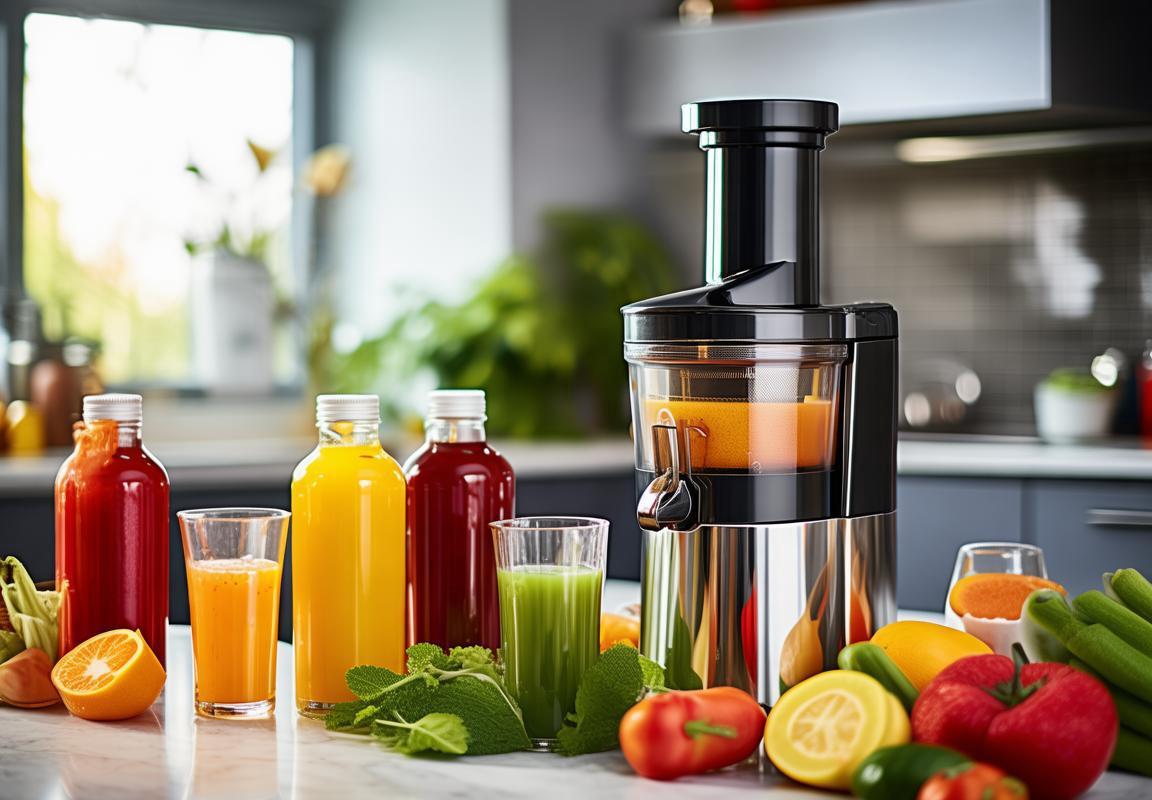
Popularity of Healthy Lifestyles
In recent years, the Western world has witnessed a remarkable shift towards healthier lifestyles. This transformation is not just a passing trend but a profound cultural change that has permeated the daily lives of millions. From fitness enthusiasts to busy professionals, the quest for well-being has become a cornerstone of modern living.
The surge in popularity of healthy lifestyles can be attributed to several factors. One of the most significant is the increasing awareness of the long-term health benefits associated with a nutritious diet and regular exercise. As people become more informed about the impact of processed foods and sedentary lifestyles on their health, they are actively seeking alternatives that promote longevity and vitality.
Supermarkets and grocery stores are now filled with an array of organic and natural products, signaling a growing preference for unprocessed foods. Consumers are not just looking for healthier options; they are also seeking products that align with their values, such as those produced with sustainable practices or fair trade principles.
Moreover, the rise of social media has played a pivotal role in this shift. Influencers and health bloggers are sharing their experiences and knowledge about nutrition, fitness, and wellness, which has inspired a generation to embrace a healthier way of life. The visibility of these influencers has made wellness trends more accessible and relatable, encouraging others to join the movement.
The workplace has also become a battleground for health promotion. Companies are increasingly offering wellness programs, gym memberships, and healthy eating options to attract and retain talent. This corporate health consciousness reflects a broader societal change where health is seen as a collective responsibility rather than an individual pursuit.
Cooking at home has seen a renaissance, with a surge in interest in cooking classes, culinary travel, and the consumption of homemade meals. People are not just cooking more; they are also cooking better, seeking out fresh, locally sourced ingredients, and experimenting with new recipes that support their health goals.
The popularity of smoothies and juices has soared as a result of this lifestyle shift. These beverages are seen as a convenient way to consume a variety of fruits and vegetables, packed with vitamins and minerals. The rise of cold-pressed juicers, which extract more nutrients than traditional centrifugal juicers, has been particularly influential in this trend.
The demand for organic produce has skyrocketed, with more consumers willing to pay a premium for products that are free from pesticides and synthetic fertilizers. This demand has fueled the growth of organic farming and has encouraged food manufacturers to offer more organic options.
In the fitness realm, the concept of “wellness” has expanded beyond just physical health to include mental and emotional well-being. Mindfulness, meditation, and stress-reduction techniques have become mainstream, complementing the physical aspects of health.
The health and wellness industry is now a multi-billion-dollar market, with endless opportunities for innovation and growth. As people continue to prioritize their health, the demand for products and services that support a healthier lifestyle will likely only increase.
This shift towards healthier lifestyles is not without its challenges. It requires a sustained effort in terms of education, access to resources, and a cultural shift that values health over convenience. However, the momentum behind this movement is undeniable, and it has the potential to reshape the future of health and wellness in the Western world.

Juicing’s Health Benefits
In recent years, the Western world has witnessed a significant shift towards healthier lifestyles. This shift is reflected in the surge of interest in juicing, a practice that has been embraced by many as a way to enhance their well-being. The health benefits of juicing are numerous and have captured the attention of both fitness enthusiasts and the general public alike.
One of the primary reasons for juicing’s popularity is its ability to provide a concentrated dose of nutrients. When fruits and vegetables are juiced, their vitamins, minerals, and antioxidants are released in a more accessible form, making it easier for the body to absorb these vital nutrients. This is particularly beneficial for individuals who may not consume enough fresh produce due to dietary restrictions, taste preferences, or a busy lifestyle.
Juicing also plays a crucial role in digestive health. The process of juicing breaks down the cell walls of fruits and vegetables, which can be particularly helpful for those with digestive issues such as irritable bowel syndrome (IBS) or celiac disease. By removing the fiber, juicing allows for easier digestion and can help alleviate symptoms like bloating and discomfort.
Many people turn to juicing as a means to boost their immune system. The high levels of vitamin C found in fruits like oranges and berries, along with the antioxidants from leafy greens such as kale and spinach, are known to strengthen the immune response. This is especially important during cold and flu season, as juicing can provide a quick and efficient way to increase these protective nutrients.
Weight management is another area where juicing has gained traction. When consumed as part of a balanced diet, juice can help control calorie intake, making it a useful tool for those looking to lose or maintain a healthy weight. The high water content of juice can also aid in satiety, reducing the likelihood of overeating.
The detoxification process is often associated with juicing, and for good reason. Many juice recipes are designed to be cleansing, featuring ingredients that are known for their diuretic and liver-supporting properties. Ingredients like beets, carrots, and ginger are commonly used in detox juices, as they help to purify the blood and support the body’s natural detoxification processes.
For those with specific dietary needs, juicing offers a versatile solution. Whether you’re following a vegan, vegetarian, or gluten-free diet, there are numerous juice recipes that cater to these preferences. This flexibility makes juicing an appealing option for a wide range of individuals seeking to improve their health.
Moreover, juicing can be a great way to introduce new fruits and vegetables into one’s diet. Sometimes, the taste of a whole fruit or vegetable can be overwhelming, but when it’s blended into a juice, the flavors can be more palatable. This can lead to a greater appreciation for these foods and a more diverse diet in the long run.
It’s important to note that while juicing offers many potential health benefits, it should not replace a balanced diet. The fiber found in whole fruits and vegetables is crucial for digestive health and overall well-being. However, when used as a supplement to a healthy diet, juicing can be a delightful and nutritious addition to one’s routine.
The health benefits of juicing are well-documented, and it’s no surprise that it has become a staple in the healthy living movement. From improving nutrient intake to aiding in digestion and weight management, juicing offers a variety of ways to support overall health and wellness. As the Western world continues to prioritize well-being, the popularity of juicing is likely to remain strong, providing a tasty and nutritious boost to many.
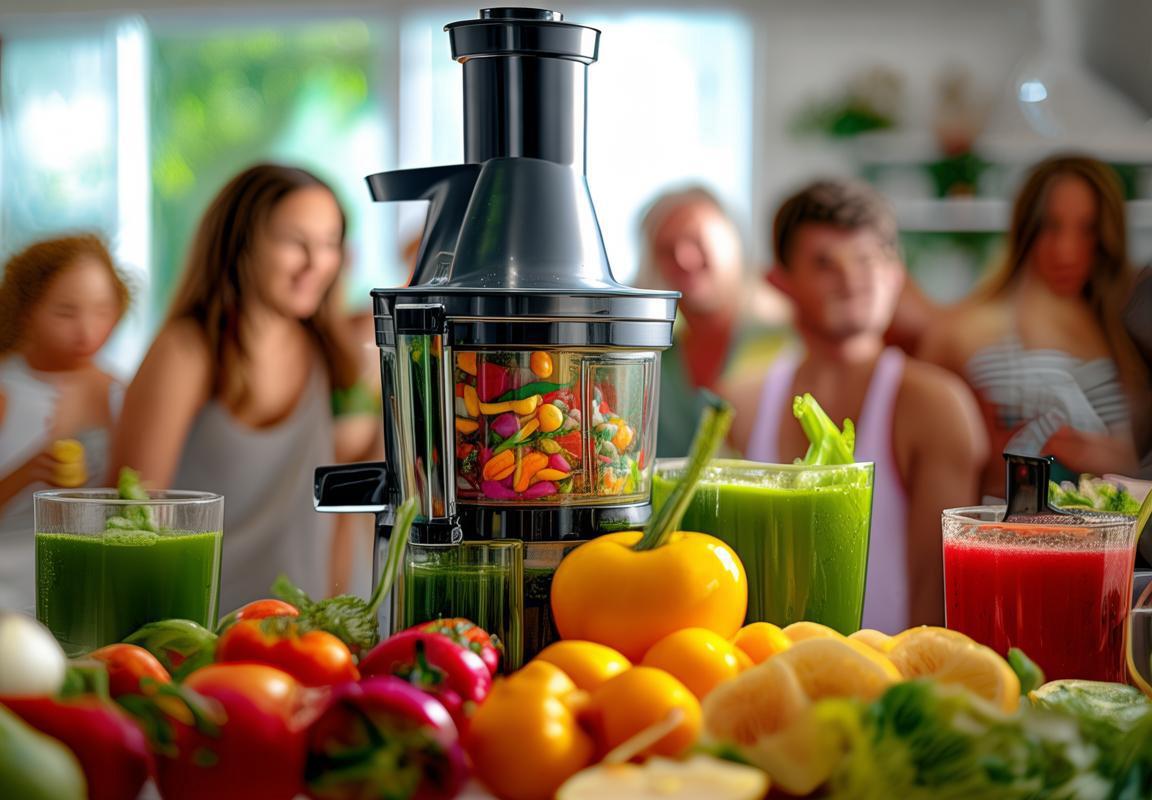
The Juicer Market’s Growth
In recent years, the juicer market has experienced a remarkable surge in popularity, reflecting a broader shift in consumer preferences towards healthier living. This growth can be attributed to a multitude of factors that have made juicing not just a trend, but a staple in many households across Western markets.
The convenience of juicing has played a significant role in its increasing demand. With busy lifestyles and a growing desire for quick yet nutritious meals, juicers offer a seamless solution. They allow individuals to extract the goodness of fruits and vegetables with ease, fitting into the fast-paced routines of the modern consumer. The ability to prepare a healthy drink in mere minutes has made juicing a convenient and accessible choice for health enthusiasts.
The health consciousness among Western consumers has also fueled the market’s growth. There’s a heightened awareness of the importance of dietary choices and the impact of these choices on overall health. Juicing is often seen as a way to maximize the intake of vitamins, minerals, and antioxidants without the added sugars and unhealthy fats found in processed foods. As a result, the market has seen a surge in organic produce sales, directly benefiting juicer sales as consumers seek to incorporate the highest quality ingredients into their fresh juices.
Moreover, the juicing trend has been supported by influential celebrities and fitness gurus. From high-profile chefs advocating for fresh juice cleanses to athletes endorsing the benefits of juicing for recovery, the positive endorsements have reached a wide audience. These endorsements have not only validated juicing as a health practice but have also inspired a new wave of enthusiasts eager to experiment with their own juice recipes.
The rise of social media and content platforms has been another driving force. With influencers and bloggers sharing their juicing experiences and health transformations, the visibility of juicers has never been greater. These platforms provide a space for users to exchange ideas, share recipes, and even join communities that celebrate the juicing lifestyle. The viral nature of these discussions has helped spread the word about juicers, creating a self-perpetuating cycle of growth.
Another key factor contributing to the juicer market’s expansion is the evolution of juicer technology. Modern juicers are more efficient and less destructive to the nutritional content of fruits and vegetables than their predecessors. The advent of cold-press and masticating juicers, for example, allows for the preservation of enzymes and nutrients that can be lost during the traditional juicing process. As technology improves, so does the quality and variety of juicers available to consumers, further stimulating demand.
Furthermore, the market has seen an increase in eco-friendly and sustainable juicers. With growing concerns about environmental impact, consumers are gravitating towards products that align with their values. These juicers are made from biodegradable materials, are energy-efficient, and encourage the recycling of fruit and vegetable scraps. The market has responded to this demand by offering a wider range of eco-conscious juicer options.
Lastly, the juicer market’s growth can be attributed to the diverse range of flavors and health benefits that juicing can offer. From green smoothies packed with leafy greens to fruit blends bursting with sweetness, there’s a juice for every palate. This variety caters to different dietary needs and preferences, from vegan and vegetarian consumers to those with specific health conditions. The market’s versatility has helped it resonate with a broad audience, leading to its continued expansion.
The juicer market’s growth in Western markets is a testament to the power of health consciousness, convenience, technology, and consumer choice. As long as these factors remain relevant, it’s likely that the popularity of juicers will continue to soar, with the market adapting and expanding to meet the ever-evolving demands of health-conscious consumers.
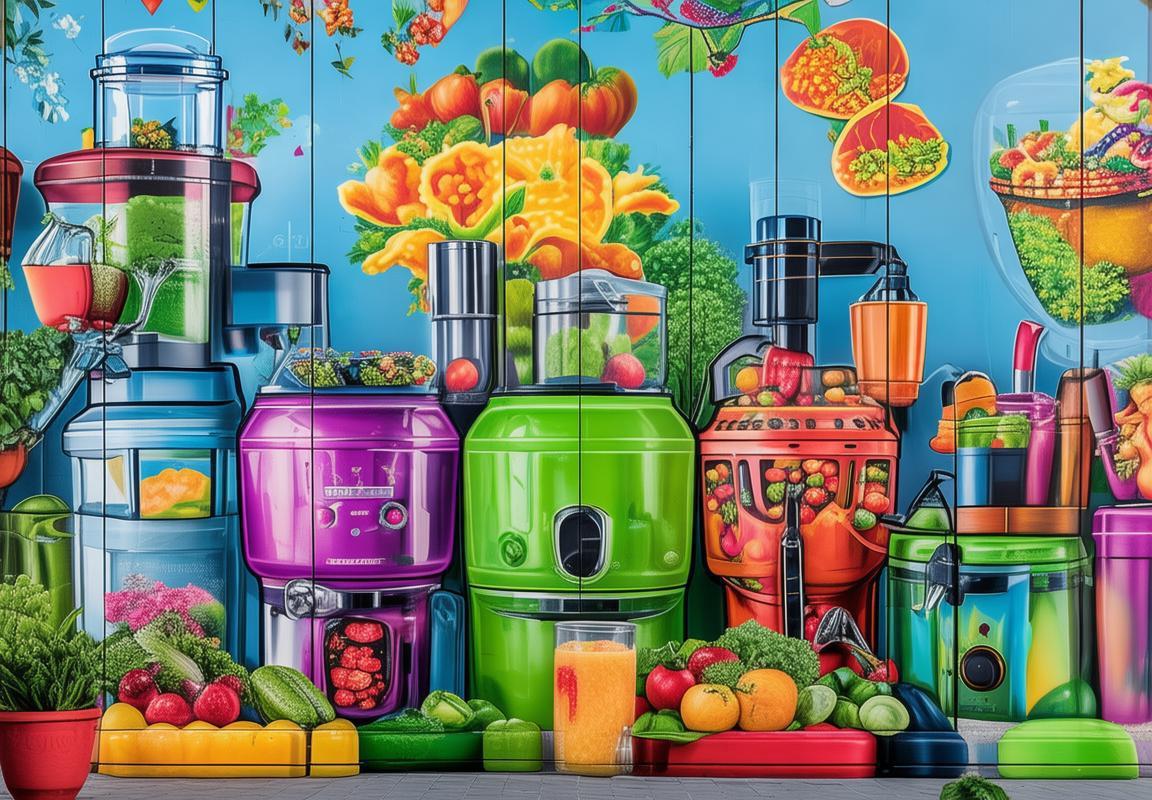
The Importance of BPA-Free Materials in Juicers
In recent years, the shift towards healthier living has been nothing short of transformative. People are increasingly aware of the impact their diet has on their overall well-being, and as a result, there’s been a surge in the popularity of juicing. This isn’t just a fleeting trend; it’s a lifestyle change that’s here to stay.
Juicing offers a concentrated dose of vitamins, minerals, and other nutrients that are essential for our bodies to function optimally. It’s a way to pack a nutritional punch without the bulk of solid food, making it appealing to those who are health-conscious or have busy lifestyles. The process of extracting juice from fruits and vegetables can unlock the hidden benefits that are often difficult to absorb when consuming them whole.
The convenience factor cannot be overstated. Busy professionals, fitness enthusiasts, and even parents looking to provide their children with a healthy breakfast or snack find juicing to be a practical solution. It’s not just about the speed; it’s also about the portability and the ease of incorporating a variety of nutrients into one’s diet.
One of the most significant factors contributing to the growth of the juicer market is the rise in health awareness. As more people become educated about the benefits of juicing, they’re more likely to invest in a quality juicer to support their healthy habits. From the simple centrifugal juicers to the high-end masticating models, the variety has expanded to cater to different preferences and needs.
However, with this growing demand comes a critical consideration: the materials used in juicer production. Among these, BPA-free materials have become a focal point due to health concerns.
Bisphenol A, or BPA, is a chemical commonly used in the production of polycarbonate plastics and epoxy resins. It’s found in everything from water bottles to baby bottles and has raised serious health concerns due to its potential to leach into food and beverages. Studies have suggested that BPA can disrupt hormonal balance, particularly in children and pregnant women, and may contribute to various health issues, including obesity, diabetes, and even cancer.
Given these risks, the demand for BPA-free materials in juicers has skyrocketed. Consumers are no longer willing to take chances with their health, especially when it comes to a device that processes food and beverages. A juicer, after all, is meant to enhance one’s health, not compromise it.
The transition to BPA-free materials has been a significant step forward for the juicer industry. Many manufacturers have responded by offering models made with materials like stainless steel, glass, and certain types of plastic that are free from BPA. These alternatives ensure that the juicer itself doesn’t introduce harmful chemicals into the juice, preserving the purity of the nutrients being consumed.
The market for BPA-free juicers has seen a surge, with health-conscious consumers actively seeking out these products. Retailers have noticed this trend and are increasingly stocking shelves with BPA-free options. Online marketplaces are also flooded with these products, offering consumers a wide array of choices to fit their budgets and preferences.
Moreover, the awareness of BPA-free materials has led to an increased interest in the overall safety of kitchen appliances. Consumers are now more likely to research the materials used in the construction of their juicers and other kitchenware, looking for certifications that assure them of the product’s safety.
The impact of the BPA-free movement on the juicer market is substantial. It’s not just about the health benefits of juicing; it’s about the peace of mind that comes with knowing the appliances we use to prepare our food are safe. The market’s growth in BPA-free juicers reflects a broader shift in consumer values, where health and safety are at the forefront.
As the market continues to grow, we can expect to see even more innovation in juicer design and materials. Companies that prioritize health and safety are likely to gain a competitive edge, as consumers become more discerning about the products they bring into their homes. The importance of BPA-free materials in juicers is not just a trend; it’s a reflection of a changing world where health is a top priority.
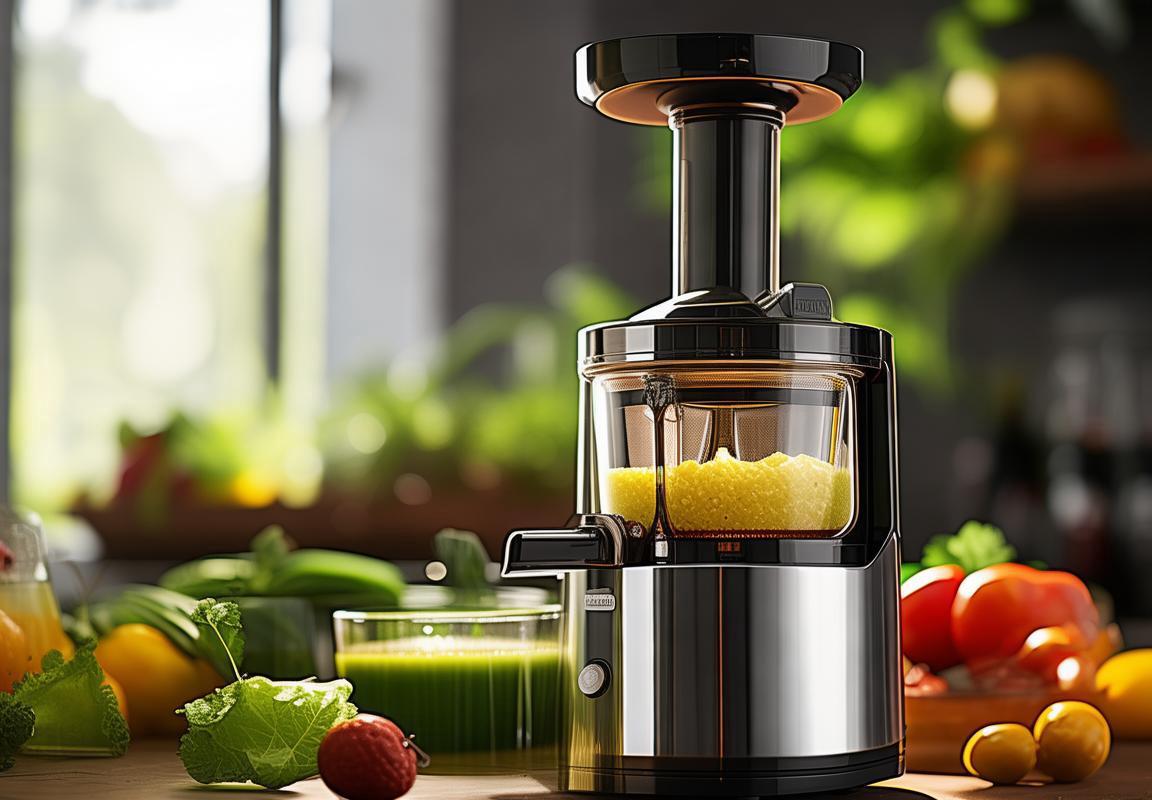
What is BPA and Why is it a Concern?
Bisphenol A, commonly known as BPA, is a chemical that has become a household name in recent years, primarily due to its presence in a wide array of consumer products. Once a staple in the manufacturing of polycarbonate plastics and epoxy resins, BPA’s versatility has made it a key component in items like water bottles, food containers, and even the linings of metal cans. However, the rise of health and environmental awareness has brought BPA to the forefront of public concern.
The primary concern with BPA stems from its potential to mimic the hormone estrogen in the human body. This endocrine-disrupting chemical (EDC) can interfere with the normal functioning of hormones, leading to a host of health issues. While the exact effects of BPA exposure are still being researched, numerous studies have suggested a link between BPA and various health problems, including:
-
Reproductive Issues: Research indicates that BPA exposure can lead to fertility problems, early puberty in girls, and altered sex hormone levels in both males and females. This has raised concerns about the impact of BPA on reproductive health and the development of offspring.
-
Cardiovascular Health: Some studies have found that BPA exposure may contribute to heart disease and hypertension by affecting blood pressure and cholesterol levels.
-
Diabetes and Obesity: There is growing evidence that BPA may disrupt metabolic processes, potentially leading to an increased risk of type 2 diabetes and obesity.
-
Cancer: Some research suggests a possible association between BPA exposure and an increased risk of certain cancers, including breast, prostate, and ovarian cancer.
-
Neurodevelopmental Effects: BPA has been linked to neurodevelopmental issues in children, including behavioral changes, learning disabilities, and cognitive impairments.
The concern over BPA’s health effects has led to a push for alternatives in products that come into contact with food and beverages. This is particularly important for juicers, as these appliances are designed to process and extract liquid from fruits and vegetables, which are then consumed directly by the user. Here’s why BPA in juicers is a concern:
-
Direct Consumption: Unlike some other products, the contents of a juicer are not just in contact with the BPA material; they are processed through it and then ingested. This direct exposure to BPA can be more harmful than secondary contact.
-
Heat Exposure: Juicers often operate at high temperatures, which can increase the rate at which BPA leaches from plastic materials. This means that even small amounts of BPA can be released into the juice, potentially leading to higher levels of exposure.
-
Long-Term Use: Juicers are typically used on a regular basis, which means that the risk of cumulative BPA exposure over time is higher than with less frequent use of other products.
Given these concerns, the push for BPA-free materials in juicers has gained momentum. Consumers are increasingly seeking out products that prioritize their health and safety, and manufacturers are responding by offering a wider range of BPA-free options. This shift is not just about avoiding a potential health risk; it’s also about empowering consumers to make informed choices about the products they bring into their homes.

Why BPA-Free Juicers are a Necessity
In the quest for health and wellness, the kitchen has become a battleground for the safety of our food and drink containers. One such concern is the presence of Bisphenol A (BPA) in plastics, a chemical that has sparked a wave of concern among consumers and health advocates. BPA-free juicers are not just a trend; they are a necessity for several compelling reasons.
The health risks associated with BPA are multifaceted, extending beyond the immediate dangers of exposure. BPA is an endocrine disruptor, meaning it can mimic the body’s hormones, potentially leading to a host of health issues. For instance, studies have linked BPA exposure to an increased risk of breast cancer, prostate cancer, and reproductive problems. The hormone-disrupting properties of BPA are particularly concerning for pregnant women, as they can affect fetal development and increase the risk of birth defects.
When it comes to juicers, the potential for BPA exposure is a significant concern. Traditional plastic juicers, often made with polycarbonate materials that contain BPA, can leach the chemical into the juice, especially when exposed to high temperatures or acidic substances. This means that every glass of freshly squeezed juice could be a source of BPA exposure, which is particularly troubling considering the frequency with which many people consume juice.
Beyond the health risks, the use of BPA in juicers raises ethical questions about the responsibility of manufacturers. Consumers are increasingly aware of the health impacts of chemicals and are demanding transparency and accountability from companies. By choosing BPA-free materials, manufacturers can meet these expectations and demonstrate a commitment to customer safety and environmental responsibility.
Moreover, the demand for BPA-free juicers reflects a broader shift in consumer preferences. People are becoming more conscious of the ingredients they consume and the impact of those ingredients on their health. This awareness has led to a surge in organic and natural products, and the same principle applies to kitchen appliances. A BPA-free juicer aligns with the values of a health-conscious consumer who wants to minimize their exposure to harmful substances.
The necessity of BPA-free juicers is also underlined by the regulatory landscape. In recent years, several countries have taken action to limit the use of BPA in consumer products, including food and beverage containers. The European Union, for example, has implemented restrictions on the use of BPA in baby bottles, and the United States has placed similar restrictions on the use of BPA in certain types of containers. As these regulations continue to evolve, manufacturers are compelled to adapt their products to comply with new standards, making BPA-free juicers a more common sight on store shelves.
Furthermore, the environmental impact of BPA cannot be overlooked. BPA is persistent in the environment and can accumulate in wildlife, leading to ecological disruptions. By opting for BPA-free materials, juicer manufacturers contribute to a reduction in the chemical’s presence in the environment, promoting a more sustainable approach to product design.
In the realm of personal care and health, the skin is often seen as a barrier, but it’s not foolproof. Chemicals can permeate the skin and enter the bloodstream, making the internal organs vulnerable to harmful substances. A BPA-free juicer is one way to reduce the risk of chemical exposure from the outside, ensuring that the healthful benefits of juicing are not offset by potential health risks.
Lastly, the psychological comfort of knowing that a product is free of harmful chemicals cannot be underestimated. The peace of mind that comes with using a BPA-free juicer is a powerful motivator for many consumers. It reinforces the idea that health is a priority, and every step taken to protect one’s health is a step in the right direction.
In conclusion, the necessity of BPA-free juicers is rooted in the health risks associated with BPA, the ethical considerations of responsible manufacturing, the growing consumer awareness of health and environmental issues, the compliance with evolving regulations, and the psychological comfort of knowing that a product is safe. As the market for juicers continues to grow, the demand for BPA-free options will only increase, reflecting a society that values health, safety, and sustainability.
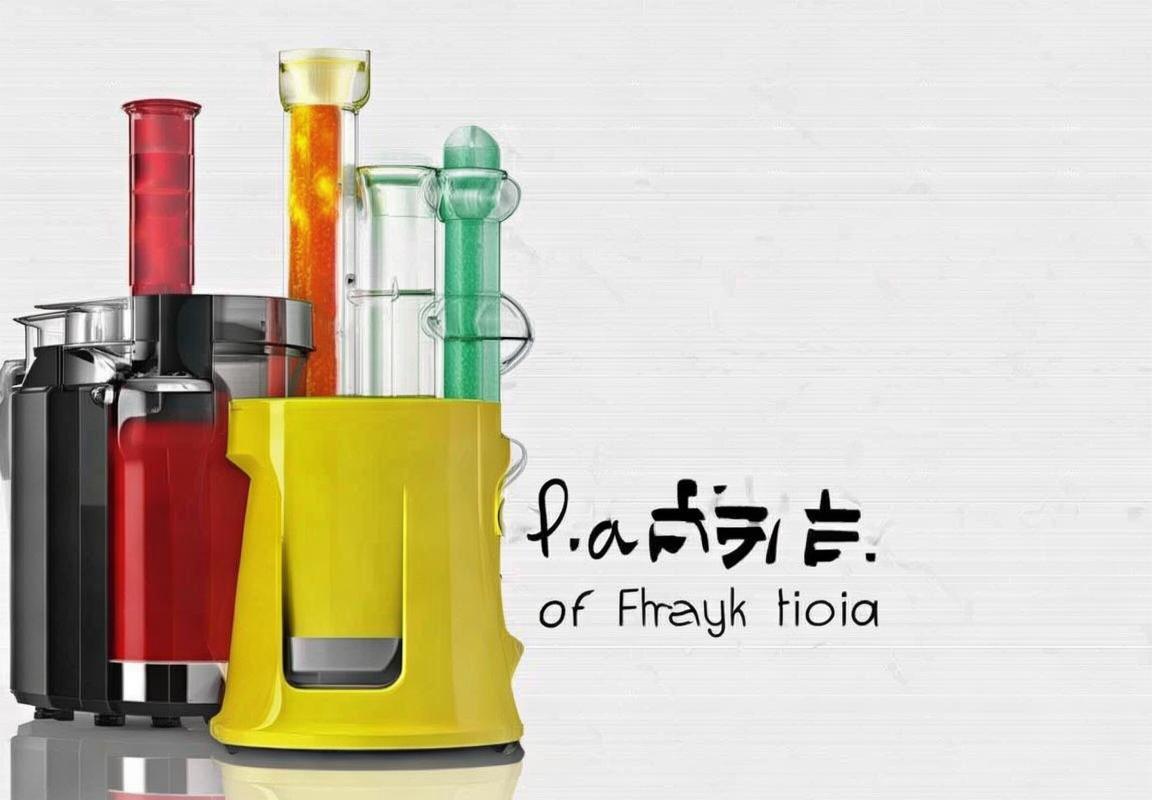
Consumer Demand for BPA-Free Options
In today’s health-conscious society, consumers are increasingly aware of the products they bring into their homes, especially when it comes to kitchen appliances. The demand for BPA-free options, particularly in juicers, has surged due to growing concerns about the potential health risks associated with bisphenol A (BPA). Let’s delve into why this shift towards BPA-free juicers has become a necessity.
The desire for transparency and purity in food and beverage preparation is at an all-time high. As consumers educate themselves on the ingredients and materials used in their kitchenware, they are turning their attention to the plastic components in juicers. BPA, a chemical often found in plastics, has come under scrutiny due to its ability to leach into food and beverages when exposed to heat, acidity, or stress.
One of the primary reasons BPA-free juicers have become a necessity is the health risks associated with BPA exposure. Studies have suggested a link between BPA and various health issues, including endocrine disruption, which can affect hormones and reproductive health. This has led many consumers to seek out alternatives that do not pose the same risks.
Moreover, the rise of social media and online forums has made it easier for consumers to share information and experiences. When one person discovers the potential dangers of BPA, they can quickly educate others, leading to a collective push for safer products. Word of mouth has become a powerful tool in promoting BPA-free juicers.
Parents, in particular, are driving the demand for BPA-free juicers. Concerns about the potential impact of BPA on their children’s development have prompted them to look for products that prioritize safety. The idea of introducing a substance that could interfere with their child’s endocrine system is enough to make many parents opt for BPA-free options.
As consumers become more environmentally conscious, the demand for BPA-free juicers also reflects a broader movement towards sustainability. Plastics containing BPA are not only harmful to human health but can also be detrimental to the environment. By choosing BPA-free materials, consumers are not only protecting their health but also contributing to a more sustainable future.
Retailers have taken notice of this shift in consumer preference. Stores are now dedicating more shelf space to BPA-free juicers, and manufacturers are responding by producing a wider variety of these products. This increased availability has made it easier for consumers to find BPA-free options that meet their needs and budgets.
The rise of organic and natural living has also contributed to the demand for BPA-free juicers. Consumers who follow these lifestyles are not only looking for health benefits but also for products that align with their values. A BPA-free juicer fits into this holistic approach to living, offering peace of mind that the appliance is not contributing to any harmful environmental or health issues.
Additionally, the health and wellness industry has seen a surge in popularity, with more people seeking to incorporate fresh, natural foods into their diets. As juicing has become a staple in many health-conscious diets, the need for BPA-free juicers has grown. Consumers are willing to invest in a quality juicer that won’t compromise their health or the quality of their juice.
The demand for BPA-free juicers is also driven by the fact that they are often perceived as a healthier choice. While the science on BPA’s impact is still evolving, the perception that BPA-free products are safer has become a significant factor in consumer purchasing decisions. This perception alone has spurred the market’s growth and made BPA-free juicers a necessity.
In conclusion, the demand for BPA-free juicers is a multifaceted trend influenced by health concerns, environmental consciousness, and the rise of organic living. As consumers continue to prioritize their health and the well-being of their families, the necessity of BPA-free options in the juicer market is only expected to grow.
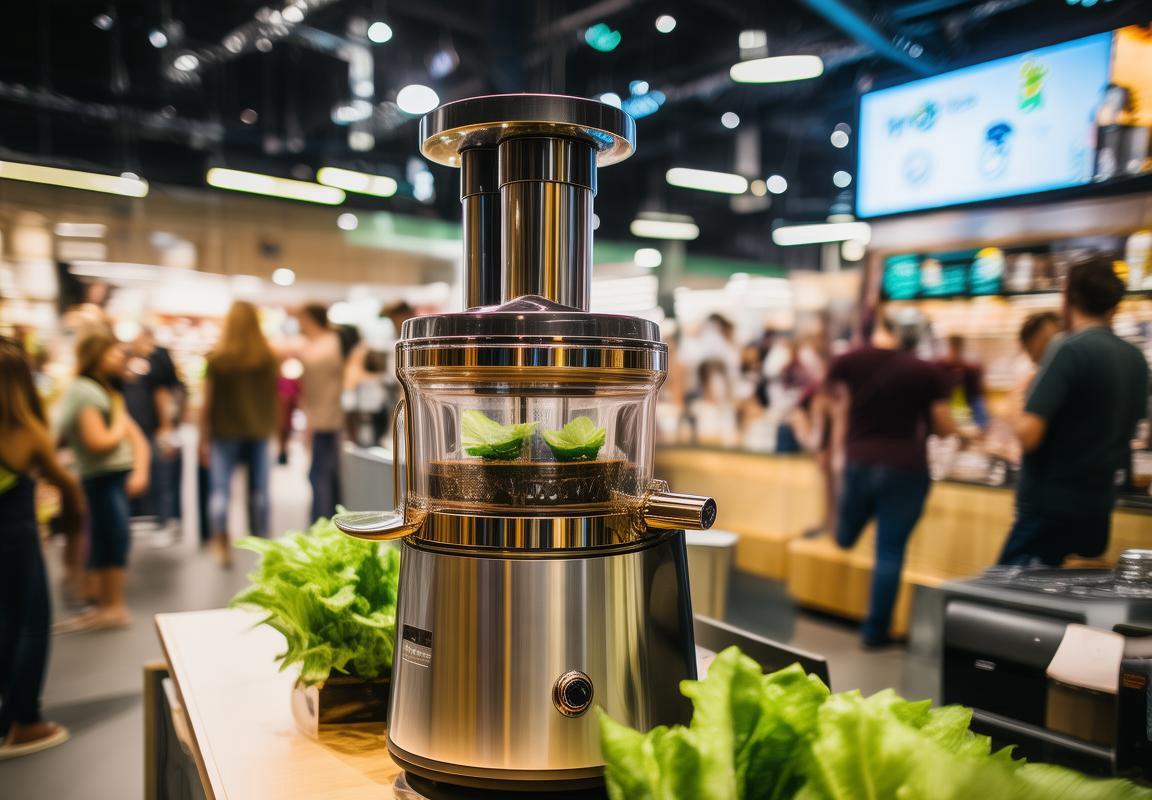
The Role of Factories in Producing Safe and Efficient Juicers
The meticulous attention to detail in the manufacturing process is paramount when it comes to ensuring the safety and efficiency of juicers. Factories play a crucial role in this industry, where precision and adherence to strict quality standards are non-negotiable. From sourcing materials to final assembly, each step is a testament to the commitment to consumer health and satisfaction.
From raw materials to finished product, the journey of a juicer is one of careful consideration. Factories must meticulously select materials that not only perform well but also meet the stringent requirements for safety and sustainability. This includes everything from the blades and pulp containers to the exterior casing and power source. Each component must be durable, easy to clean, and, above all, free from harmful substances like BPA.
The design phase is equally critical. Engineers and designers work in tandem to create juicers that are not only aesthetically pleasing but also user-friendly and efficient. They must account for factors such as the juicer’s capacity, the types of fruits and vegetables it can process, and the ease with which it can be disassembled for cleaning. This design process often involves multiple iterations and rigorous testing to ensure the juicer can handle a variety of ingredients without compromising on performance or safety.
Safety protocols are at the forefront of every factory’s operations. Quality control teams are tasked with inspecting every stage of production to ensure that all units meet the necessary safety standards. This includes regular checks for sharpness in blades, electrical integrity, and the absence of any foreign objects that could pose a risk. The goal is to create a juicer that not only extracts juice efficiently but also does so without the risk of injury or contamination.
Efficiency is another key factor. Factories are continuously seeking ways to optimize their production processes to reduce waste and energy consumption. This includes investing in advanced machinery that can handle large volumes of production while minimizing the environmental impact. Energy-efficient lighting and heating systems are also implemented to lower the carbon footprint of the factory.
The assembly line is where the juicer comes together. Workers are trained to follow precise procedures, ensuring that each unit is built to the highest standard. The attention to detail is evident in the tight tolerances and seamless integration of parts. Every juicer must be tested before it leaves the factory, with a focus on its ability to extract juice quickly and effectively, as well as its longevity.
Innovation is a driving force in the juicer manufacturing industry. Factories are constantly exploring new materials, such as BPA-free plastics and stainless steel, that offer better performance and safety. They’re also investing in research and development to create juicers that can handle a wider variety of produce, from leafy greens to tough root vegetables, with ease.
Moreover, factories are increasingly aware of the importance of transparency and consumer trust. They’re not only committed to producing safe and efficient juicers but also to communicating their efforts to the public. This includes providing detailed information about the materials used, the safety certifications held, and the environmental practices in place.
In conclusion, the role of factories in producing safe and efficient juicers is multifaceted. It involves selecting the right materials, designing with user safety and performance in mind, adhering to rigorous safety protocols, optimizing production for efficiency and sustainability, and fostering innovation. Through these efforts, factories ensure that the juicers reaching consumers are not just kitchen appliances but also a testament to a commitment to health, safety, and environmental responsibility.
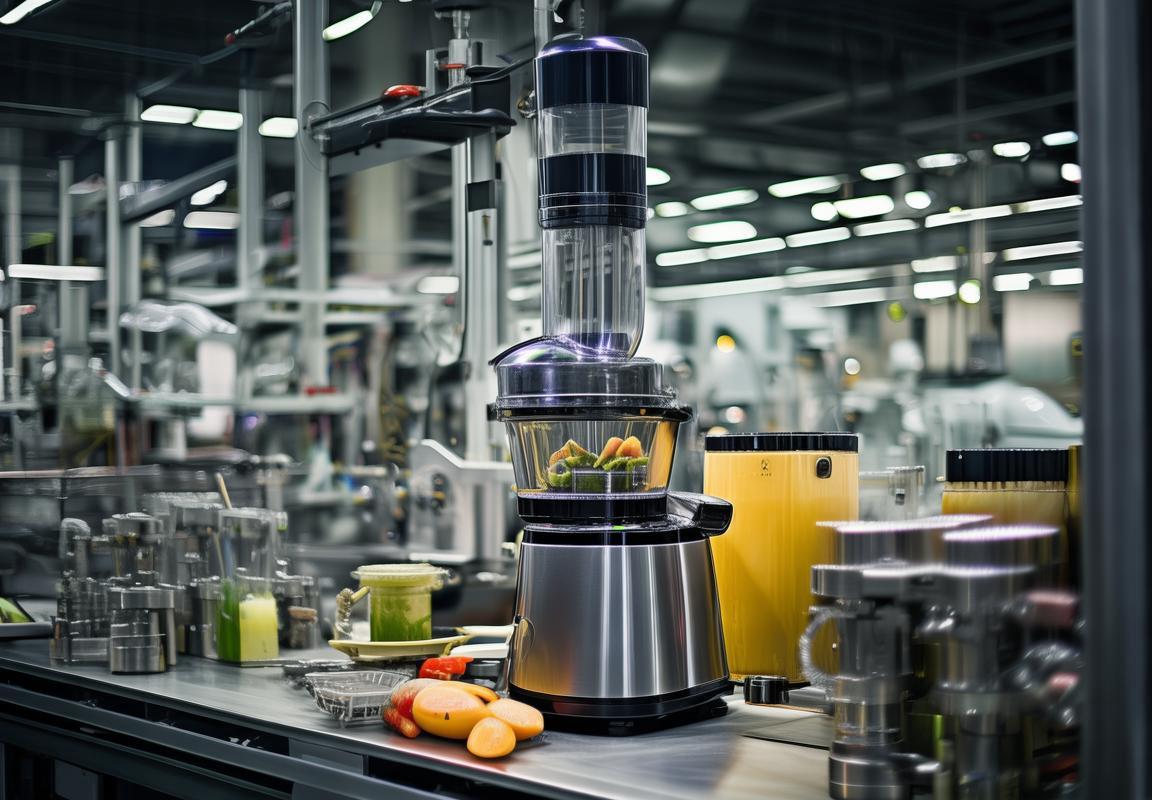
Quality Control in Juicer Manufacturing
In the competitive world of juicer manufacturing, ensuring quality is paramount. From the selection of raw materials to the final product assembly, every step is meticulously monitored to guarantee that the juicers hitting the market are not only functional but also safe for consumers. Let’s delve into the various aspects of quality control that play a crucial role in the production process.
Manufacturers prioritize the sourcing of high-quality, durable components. Plastic parts, for instance, must be free from defects and capable of withstanding the rigorous demands of juicing. Glass components must be resistant to thermal shock, while metals should be non-reactive to maintain the purity of the juice. This careful selection sets the foundation for a high-quality juicer.
Precision engineering is another key aspect of quality control. The blades inside a juicer need to be sharp enough to efficiently extract juice without damaging the nutrients. The precision of the gears and motors is equally important, as it ensures the juicer operates smoothly and quietly. Quality control teams meticulously check these mechanical parts for any inconsistencies or weaknesses.
Safety standards are non-negotiable in juicer manufacturing. Products must comply with international safety regulations, which often mean rigorous testing for electrical safety, material durability, and structural integrity. Factories invest in advanced testing equipment to simulate real-world conditions, such as extreme temperatures and pressure, to ensure that the juicers can withstand these challenges.
The assembly process is a critical point where quality control is applied. Workers are trained to follow strict protocols to ensure each component is correctly fitted and aligned. Quality inspectors conduct regular checks on the assembly line to catch any errors before they become defects in the final product. This includes checking for loose connections, uneven gaps, or any visible signs of damage.
Functionality testing is a staple of quality control. Juicers are subjected to a variety of tests to assess their performance. They are tested for juice yield, noise levels, and efficiency. Some manufacturers go a step further by testing the juicer’s ability to extract juice from different types of fruits and vegetables, ensuring versatility and reliability.
In the realm of quality control, the design of the juicer itself is also under scrutiny. Ergonomics are considered to ensure that the juicer is user-friendly and easy to clean. The design should also facilitate the easy removal of the juicer’s components for thorough cleaning, which is essential for maintaining hygiene and preventing bacterial growth.
Continuous improvement is a hallmark of quality control in juicer manufacturing. Manufacturers often collect feedback from customers and use it to make iterative changes to their products. This might involve tweaking the design for better performance, improving the user interface, or enhancing the juicer’s durability.
Quality control doesn’t end once the juicer leaves the factory. Post-manufacturing, products are often put through a series of checks to ensure they meet the required standards. These checks might include leak tests, vibration tests, and drop tests to simulate potential misuse scenarios.
The role of factories in producing safe and efficient juicers is, therefore, multifaceted. It involves a combination of rigorous material selection, precise engineering, stringent safety standards, and ongoing quality checks throughout the manufacturing process. By maintaining such high standards, factories are able to deliver products that not only fulfill consumer expectations but also prioritize their health and safety.
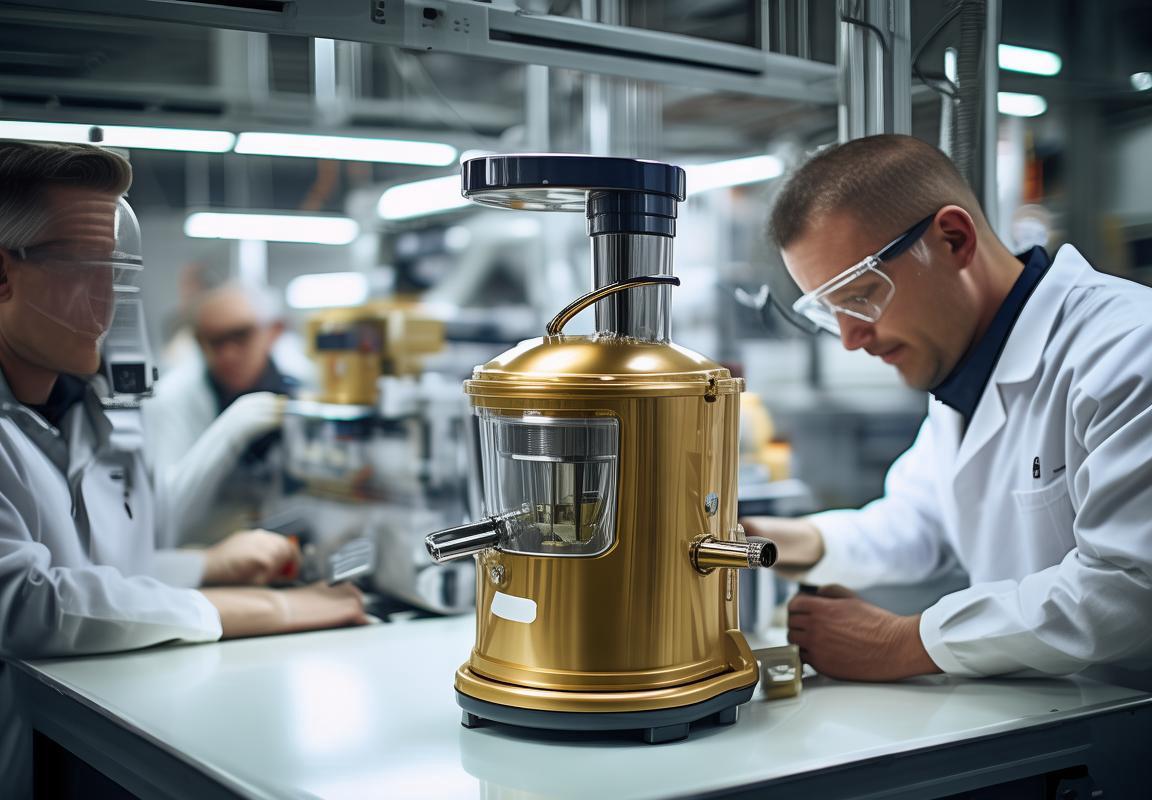
Innovation in Juicer Design
The evolution of juicer design has been a testament to human ingenuity and the relentless pursuit of efficiency. Over the years, manufacturers have pushed the boundaries of what’s possible, creating devices that are not only more effective at extracting nutrients but also more user-friendly and visually appealing. Here’s a closer look at some of the innovations that have shaped the modern juicer market.
The shift towards compact and multi-functional juicers has been significant. Early models were often bulky and single-purpose, but today’s juicers are designed to be space-saving and versatile. Some models can double as smoothie makers or even pasta extruders, offering homeowners a kitchen appliance that can handle a variety of tasks.
One of the most notable innovations is the use of advanced juicing mechanisms. Centrifugal juicers, which have been around for decades, have been joined by masticating or slow juicers that offer a different approach to extracting juice. These juicers grind fruits and vegetables at slower speeds, which proponents argue results in more nutrients being retained in the final product.
The design of juicers has also evolved to be more user-friendly. Modern juicers often feature larger feed chutes, which means less preparation time for users. Larger chutes mean you can juice whole fruits and vegetables without having to cut them into smaller pieces, a feature that has been particularly popular among busy individuals who want to squeeze in their daily juice routine without extra hassle.
Another key innovation is the inclusion of safety features. Modern juicers come with anti-jamming mechanisms, which prevent the machine from overheating or becoming damaged due to overloading. These features not only protect the appliance but also ensure a safer experience for the user.
The aesthetic appeal of juicers has also seen a transformation. Once a utilitarian appliance, today’s juicers are sleek and stylish, often made with high-quality materials that not only enhance their durability but also their appearance. Stainless steel has become a popular choice for its strength and resistance to rust, while some brands are opting for non-toxic plastics and BPA-free materials to cater to health-conscious consumers.
Efficiency is another area where juicer design has made significant strides. The blades and screens used in juicers have been refined to ensure that they can process a wider range of produce, including leafy greens and fibrous vegetables, with minimal waste. The design of the blade and the angle at which it meets the produce are crucial in extracting the maximum amount of juice while minimizing the amount of pulp.
Juicers have also become quieter and more energy-efficient. Early models were loud and consumed a considerable amount of electricity, but modern juicers are designed to operate with minimal noise and less energy, making them more suitable for kitchen environments where noise and energy consumption are concerns.
The inclusion of digital interfaces has also been a game-changer. Many juicers now come with digital displays that provide real-time feedback on speed, time, and juice output. These interfaces not only make the juicing process more intuitive but also allow users to experiment with different settings to achieve their desired results.
Lastly, the portability of juicers has improved. Some models are designed to be lightweight and easy to transport, making them perfect for those who might want to juice on the go or take their juicer to a friend’s house. The integration of features like removable parts and compact designs has made juicers more practical for a variety of lifestyles.
In conclusion, juicer design has come a long way, with a focus on efficiency, user experience, and aesthetics. As the health and wellness trend continues to grow, manufacturers are likely to keep pushing the boundaries of what’s possible, ensuring that juicers remain a staple in modern kitchens.
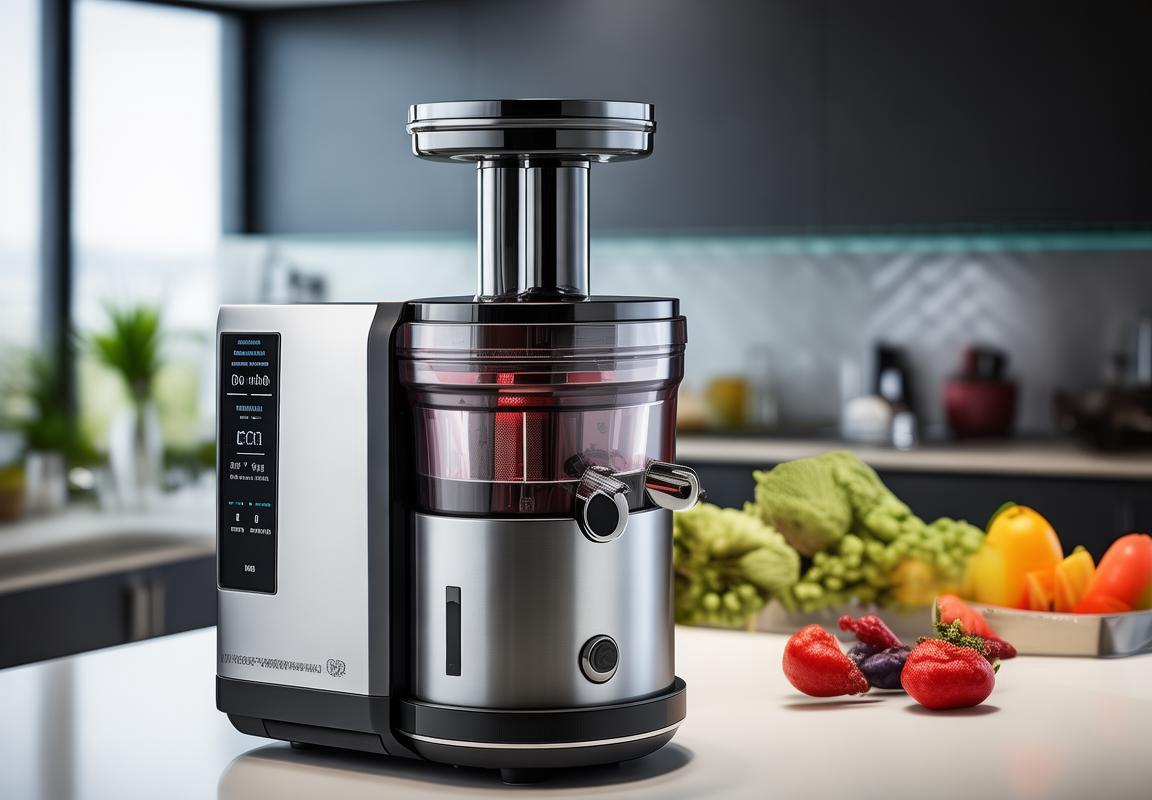
Ensuring Global Safety Regulations
The intricacies of juicer manufacturing demand a meticulous approach to quality control, ensuring that each unit that leaves the factory floor meets the highest standards of safety and performance. From the selection of raw materials to the final assembly, every step is crucial in the production process.
Materials are the foundation of a quality juicer. Factories carefully source materials that are not only durable but also safe for contact with food. The use of stainless steel, for instance, is common due to its resistance to corrosion and non-reactive nature. Plastic components, if used, are often chosen for their BPA-free certifications, ensuring that they do not leach harmful chemicals into the juice. The strict adherence to these material standards is a testament to the commitment to quality.
The manufacturing process itself is a dance of precision and care. Workers must meticulously follow assembly lines, where each part is checked for fit and function. Advanced machinery ensures that the juicers are not only aesthetically pleasing but also operate smoothly. The cutting-edge technology used in these factories can detect even the smallest defects, preventing subpar products from reaching the consumer.
Testing is another critical component of quality control. Juicers are subjected to rigorous testing to ensure they can withstand the demands of everyday use. This includes pressure tests to ensure the juicer can handle tough fruits and vegetables, as well as durability tests that simulate years of use. These tests not only guarantee that the juicer will last but also that it will perform consistently over time.
Innovation in juicer design is not just about creating a new look; it’s about improving functionality and user experience. Designers and engineers work tirelessly to create juicers that are not only efficient but also user-friendly. The latest juicers often feature intuitive interfaces, easy-to-clean parts, and innovative features like quiet operation and programmable settings.
Safety is paramount in juicer design. Factories must ensure that the juicers are free from sharp edges that could cause injury and that all moving parts are secure. The design also includes considerations for ease of maintenance, allowing users to clean and service the juicer without the risk of accidents.
Ensuring global safety regulations is a complex task that requires factories to be aware of and comply with the varying standards across different countries. This means staying up-to-date with international standards organizations such as the International Electrotechnical Commission (IEC) and the International Organization for Standardization (ISO). Compliance with these standards often involves certifications like CE marking in Europe, which signifies that the product meets the health, safety, and environmental protection requirements of the European Union.
Factories must also consider regional regulations. For example, in the United States, the Food and Drug Administration (FDA) sets guidelines for food-contact materials, ensuring that they are safe for use in food preparation. In China, the General Administration of Quality Supervision, Inspection, and Quarantine (AQSIQ) has its own set of standards. Adhering to these regulations requires a comprehensive understanding of the legal landscape and the ability to adapt manufacturing processes accordingly.
Global safety regulations also encompass environmental concerns. Factories must ensure that their production processes are environmentally friendly, using sustainable materials and minimizing waste. This includes recycling and proper disposal of hazardous materials, as well as energy-efficient operations.
The role of factories in producing safe and efficient juicers is multifaceted. It involves a commitment to quality, innovation in design, and a thorough understanding of the global safety landscape. By adhering to these principles, factories can deliver products that not only enhance the health and well-being of consumers but also stand the test of time and international scrutiny.
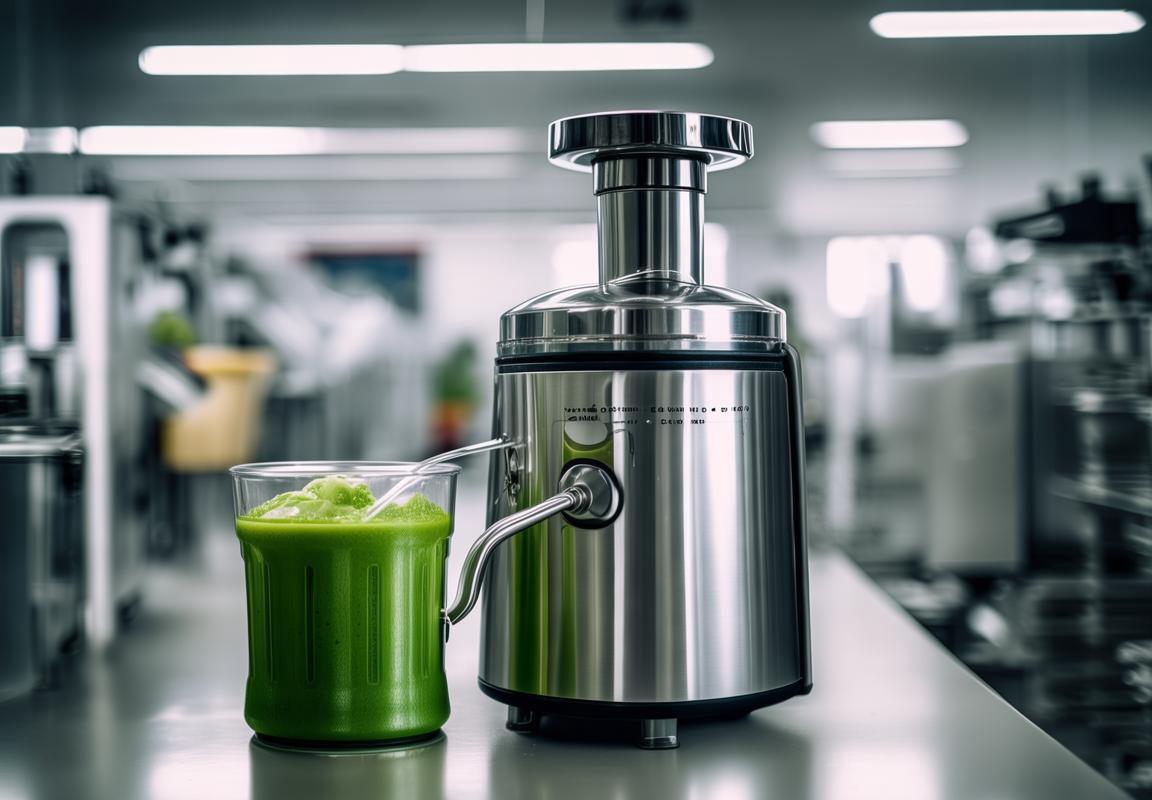
Insights from Industry Experts
In the ever-evolving landscape of kitchen appliances, industry experts weigh in on the latest trends, future directions, and the importance of innovation in the juicer market. Their insights shed light on the strategic moves and consumer preferences that are shaping the industry.
The experts agree that health consciousness is at the forefront of consumer buying decisions. With a surge in awareness about the benefits of fresh, unprocessed foods, juicers have become a staple in many kitchens. “People are looking for ways to incorporate more fruits and vegetables into their diets,” notes an industry insider. “Juicers provide a convenient way to get those nutrients in a palatable form.”
One key area of innovation highlighted by experts is the development of juicers that offer more than just functionality. “Design is becoming increasingly important,” says a seasoned expert. “Consumers are not just buying a juicer; they’re buying a piece of kitchen art that complements their home decor.” This shift has led to sleeker, more stylish designs that are as much about aesthetics as they are about performance.
Safety is another critical aspect that experts emphasize. “The use of BPA-free materials is non-negotiable,” states an industry veteran. “Consumers are more educated about the potential health risks associated with BPA, and they expect their appliances to be safe.” This emphasis on safety has driven manufacturers to invest in research and development to create alternative materials that are both safe and effective.
Energy efficiency is also a growing concern. Experts point out that consumers are looking for appliances that not only perform well but also do so with minimal environmental impact. “The next big trend will be juicers that are more energy-efficient,” predicts an industry watcher. “As sustainability becomes a larger part of the conversation, we’ll see more products that are designed to use less power.”
The rise of smart technology is another trend that industry experts are closely following. “Smart juicers that can connect to your phone or smart kitchen system are becoming more popular,” notes an expert. “These devices can offer personalized recipes, track your nutrition intake, and even remind you to clean them. It’s all about convenience and connectivity.”
When it comes to the market, experts see a diverse landscape with niche opportunities emerging. “There’s a segment for high-end juicers that cater to health food enthusiasts and fitness professionals,” explains an industry insider. “Then there’s the budget-friendly market, where value and performance are key.”
The role of marketing and branding is also discussed. Experts believe that companies need to communicate the value proposition of their products effectively. “Storytelling is powerful in this industry,” says a marketing expert. “Consumers want to know the story behind the product, whether it’s the origin of the materials used or the inspiration behind the design.”
In conclusion, industry experts are unanimous in their belief that the juicer market is poised for continued growth. The key will be to innovate, stay safe, and meet the evolving needs of consumers. As the health and wellness trend continues to rise, so too will the demand for quality, safe, and efficient juicers that can help people live healthier lives.
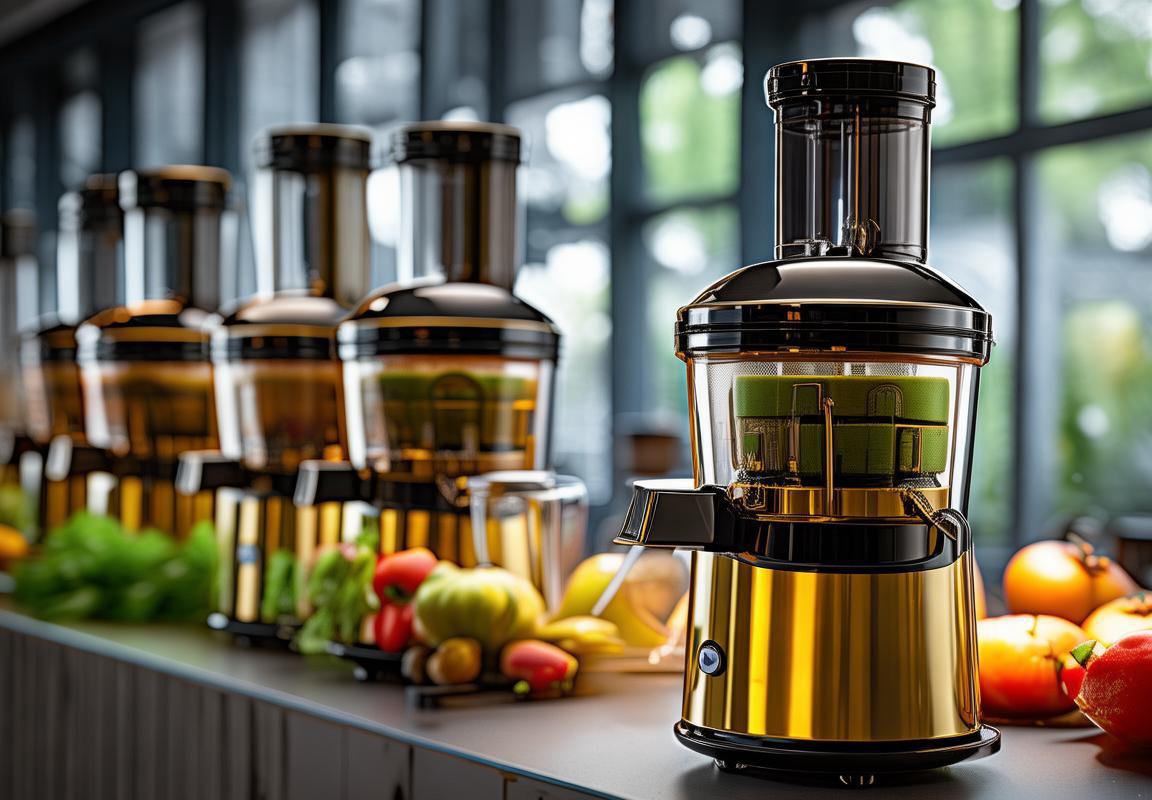
Expert Opinions on Market Trends
The juicer market has seen a surge in innovation, driven by consumer demand for healthier lifestyles and a deeper understanding of the benefits of fresh, unprocessed foods. Industry experts weigh in on the latest trends, offering insights into the direction the market is taking.
The shift towards organic and non-GMO produce has significantly influenced juicer design. Consumers are increasingly seeking out appliances that can handle a wider variety of fruits and vegetables, including those that are more delicate or harder to juice. Experts note that this demand has spurred the development of juicers with advanced technology to accommodate these diverse ingredients.
With the rise of social media and influencer culture, the juicer market has also seen a boost in product visibility. Experts suggest that the popularity of healthy living influencers has played a crucial role in shaping consumer preferences. These influencers often showcase their juicing routines and the benefits they experience, which can significantly impact the purchasing decisions of their followers.
Sustainability is another key trend that experts highlight. As consumers become more environmentally conscious, they are looking for products that are not only safe for their health but also for the planet. This has led to a growing interest in juicers made from sustainable materials and those that are energy-efficient, reducing their carbon footprint.
Customization is also making waves in the juicer market. Experts point out that while traditional juicers are still popular, there’s a growing segment of consumers interested in specialized models. These include cold-press juicers, which extract more juice and nutrients from fruits and vegetables, and juicers designed for specific health goals, such as detoxification or weight loss.
The integration of smart technology in juicers is another trend that experts find intriguing. With the advent of smart appliances, consumers can now remotely control their juicers, track their usage, and even receive maintenance reminders. This technological integration not only adds convenience but also enhances the user experience.
The juicer market’s growth is not just driven by consumer trends but also by the industry’s ability to adapt to these changes. Experts note that companies that can pivot quickly to meet new demands are the ones that will thrive. This includes not only the design of the juicers themselves but also the marketing strategies and customer service models.
Innovation in juicer design is also being driven by the need for better performance and ease of use. Experts mention the introduction of self-cleaning features, which have become a significant selling point for many consumers. These features not only save time but also ensure that the juicer remains hygienic between uses.
The rise of juice bars and smoothie shops has also had a notable impact on the juicer market. Experts observe that as these establishments become more popular, there’s a corresponding increase in demand for commercial-grade juicers that can handle the volume and variety of ingredients required to serve a large number of customers.
Lastly, experts note that the juicer market is not without its challenges. Competition is fierce, and consumers are more discerning than ever. Brands that can differentiate themselves through unique features, superior quality, and a strong commitment to health and sustainability will be the ones that stand out in this crowded space.
In summary, the juicer market is a dynamic and evolving sector, shaped by consumer preferences, technological advancements, and the industry’s ability to adapt. As the market continues to grow, it will be interesting to see how these trends develop and what new innovations emerge to capture the attention of health-conscious consumers.
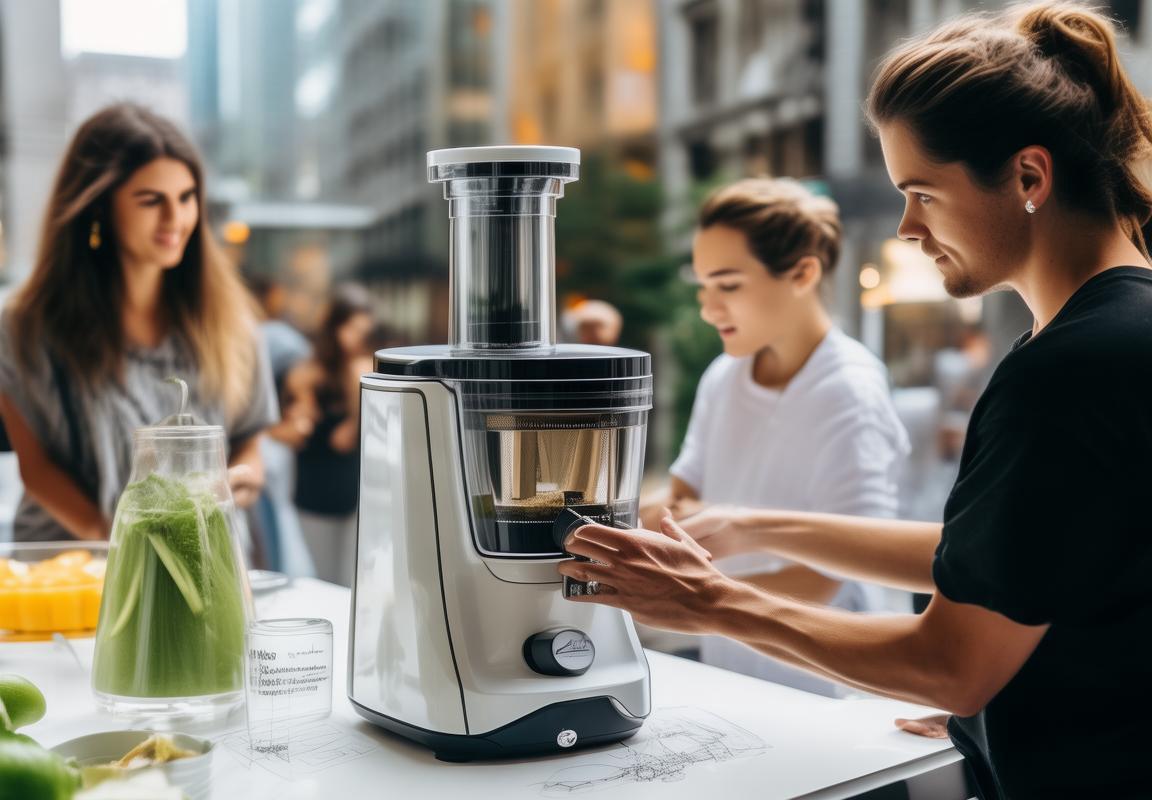
The Future of Juicer Technology
The juicer market has been witnessing a surge in technological advancements, and industry experts are buzzing about the future of juicer technology. Here’s a glimpse into what they predict:
The integration of smart technology is set to revolutionize the juicing experience. Experts anticipate that the next generation of juicers will feature built-in sensors and apps that can track nutritional intake, provide personalized health recommendations, and even offer remote control capabilities. These smart features would not only enhance the user experience but also ensure that consumers are getting the most out of their juicing habits.
Energy efficiency is another area where juicer technology is expected to make significant strides. As environmental concerns grow, experts believe that juicers will become more energy-efficient, reducing their carbon footprint and making them a greener choice for eco-conscious consumers. This could involve the use of more sustainable materials and the development of more energy-saving motor technologies.
The customization of juicers to cater to specific dietary needs is a trend that’s gaining traction. Industry experts foresee a future where juicers are not just versatile appliances but also highly adaptable to individual health goals. For example, juicers could be designed to extract different nutrients or have specific settings for juicing leafy greens, fruits, or vegetables with varying textures.
Material innovation is a key factor in the evolution of juicer technology. Experts predict that there will be a shift towards using materials that are not only durable but also safe for long-term use. This includes exploring new, non-toxic plastics and metals that are free from harmful chemicals like BPA. The goal is to create juicers that are not only functional but also safe for the entire family.
The rise of compact and portable juicers is another area of growth. Experts note that as consumers seek convenience and the ability to juice on-the-go, manufacturers will focus on creating smaller, more portable models. These could be perfect for individuals with limited kitchen space or those who travel frequently and want to maintain a healthy lifestyle.
The integration of juicers with other kitchen appliances is also a possibility. Experts envision a future where juicers are seamlessly integrated into kitchen countertops or even refrigerators, providing a holistic approach to healthy living. This could mean juicers that automatically dispense juice into a built-in glass or that have a direct connection to a fridge for storage.
The emphasis on cleanability is another area where juicer technology is expected to improve. Experts suggest that juicers of the future will be easier to clean, with fewer parts and more intuitive designs. This would reduce the time and effort required to maintain the appliance, making it more appealing to busy households.
Lastly, the rise of subscription services could influence juicer technology. Experts predict that there might be a market for juicers that are part of a subscription service, which includes not only the appliance but also a monthly supply of fresh produce. This would streamline the juicing process and ensure that consumers always have the freshest ingredients at hand.
In conclusion, the future of juicer technology is poised to be innovative, user-friendly, and environmentally conscious. As experts continue to push the boundaries of what’s possible, consumers can look forward to a range of new features and advancements that will make juicing an even more enjoyable and healthful part of their daily routine.
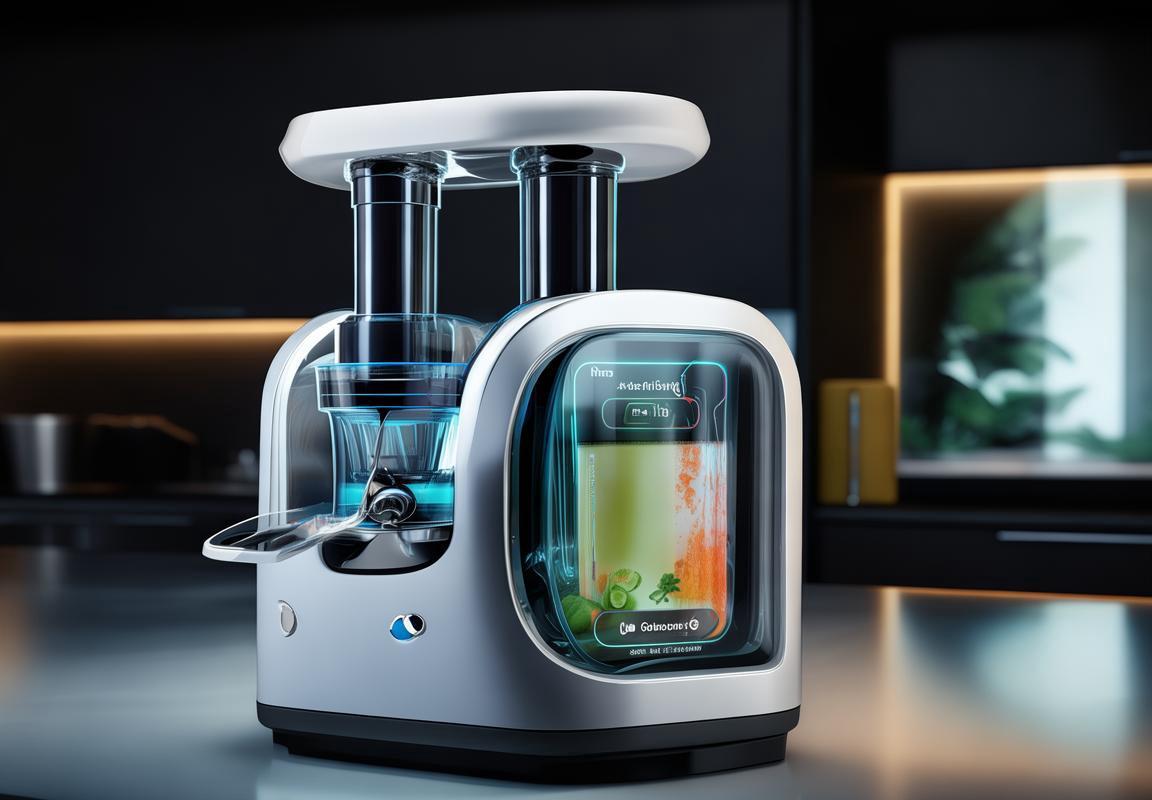
The Impact of BPA-Free Materials on Consumer Health
BPA-free materials have become a cornerstone in the manufacturing of juicers, and their impact on consumer health cannot be overstated. The shift towards safer alternatives to bisphenol A (BPA) reflects a growing awareness of the potential health risks associated with this chemical. Here’s how BPA-free materials are reshaping the juicing industry and why they matter to health-conscious consumers.
The Shift to BPA-Free PlasticsTraditionally, many plastic products, including some juicers, were made with BPA, a chemical known for its ability to mimic estrogen and interfere with hormonal systems. However, research has shown that BPA can leach into food and beverages, especially when plastics are exposed to heat or come into contact with acidic substances. The move to BPA-free plastics in juicers has been a direct response to these findings, offering consumers a safer option for extracting their juices.
Reducing Exposure to Hormone DisruptorsHormone disruptors like BPA have been linked to various health issues, including reproductive problems, developmental disorders, and even cancer. By using BPA-free materials, juicer manufacturers are reducing the potential for these harmful substances to enter the human body. This is particularly important for individuals who consume a lot of fruit and vegetable juices, as these are often stored in plastic containers or processed with BPA-containing equipment.
Enhanced Consumer ConfidenceThe demand for BPA-free juicers has been driven by a rising consumer consciousness about the health implications of the products they use. Consumers are increasingly seeking out products that are free from harmful chemicals, and juicers made with BPA-free materials are seen as a healthier choice. This shift has not only encouraged innovation in the juicing market but has also given consumers peace of mind that their drinking habits are not compromising their health.
Long-Term Health BenefitsThe health benefits of juicing are well-documented, but the potential risks associated with BPA have raised concerns about the safety of the process. By using BPA-free materials, manufacturers are addressing these concerns, potentially leading to long-term health benefits for users. This includes a reduction in the risk of hormonal imbalances, which can affect everything from mood to weight regulation.
Regulatory Compliance and Industry StandardsThe push for BPA-free materials in juicers is also a reflection of evolving regulatory standards and industry best practices. As governments and health organizations worldwide continue to scrutinize the safety of chemicals in consumer products, manufacturers are responding by adopting safer alternatives. This not only ensures compliance with regulations but also positions brands as leaders in health and safety.
Environmental ConsiderationsIn addition to health benefits, the use of BPA-free materials aligns with environmental concerns. BPA is a persistent chemical that can persist in the environment and potentially accumulate in wildlife. By using alternatives, juicer manufacturers are contributing to a greener planet, which is an important factor for many eco-conscious consumers.
Innovative Materials and DesignThe search for BPA-free materials has spurred innovation in juicer design. New plastics, ceramics, and stainless steel have become popular choices, offering not just safety but also durability and aesthetic appeal. These materials often come with their own health benefits, such as being free from the need for harsh cleaning agents or the risk of rust.
Consumer Education and AwarenessThe impact of BPA-free materials on consumer health is also about education and awareness. As more consumers become informed about the risks of BPA and the benefits of BPA-free products, they are more likely to make informed purchasing decisions. This increased awareness has created a ripple effect throughout the juicing industry, driving the demand for safer products and pushing manufacturers to prioritize health and safety in their designs.
The Future of BPA-Free JuicersAs the health and environmental impacts of BPA become more widely recognized, it’s likely that the use of BPA-free materials in juicers will continue to grow. The future may see even more advanced materials and designs that not only protect consumer health but also offer new functionalities and convenience. The commitment to BPA-free materials is a testament to the industry’s dedication to providing safe and reliable products for consumers who are increasingly health-conscious.
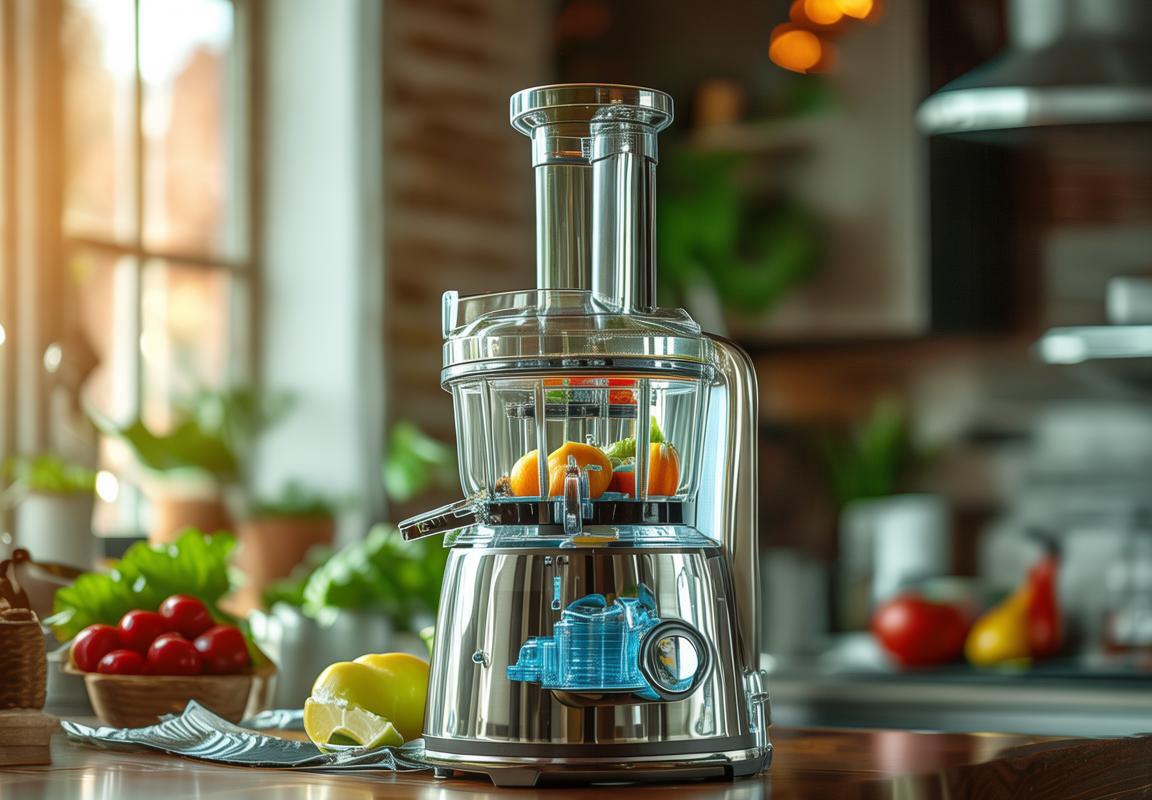
Consumer Tips for Choosing the Best BPA-Free Juicer
When it comes to selecting the best BPA-free juicer, consumers need to consider several factors to ensure they are making a healthy and safe choice. Here are some tips to help you navigate through the myriad of options available:
1. Material Transparency:It’s crucial to look for juicers that are explicitly labeled as BPA-free. Companies that prioritize customer health will often highlight this feature prominently on their packaging or product descriptions. This transparency not only reassures you of the safety of the product but also reflects the brand’s commitment to quality.
2. Research and Reviews:Before making a purchase, spend some time researching different models and reading reviews from other consumers. Look for patterns in the feedback, such as durability, ease of use, and performance. Reviews can provide valuable insights into the real-world experience of using a particular juicer.
3. Capacity and Portability:Consider how much juice you need to prepare at one time and whether you want a juicer that is easy to store and transport. Larger families or those who enjoy hosting may benefit from a juicer with a higher capacity, while individuals or small households might prefer a more compact model.
4. Type of Juicer:There are several types of juicers available, each with its own advantages and disadvantages. Centrifugal juicers are fast and efficient but can be noisy and generate a lot of froth. Masticating or cold-press juicers are quieter, produce less froth, and extract more nutrients, but they are slower and typically more expensive. Choose the type that aligns with your lifestyle and preferences.
5. Cleaning and Maintenance:A juicer that is difficult to clean can be a hassle. Look for models with removable parts that are easy to wash and a design that doesn’t trap juice and pulp in hard-to-reach places. Some juicers come with self-cleaning features or are dishwasher-safe, which can save you time and effort.
6. Warranty and Customer Service:A good warranty can provide peace of mind, especially for a significant investment. Check the length of the warranty and what it covers. Additionally, consider the brand’s customer service reputation. A company that stands behind its products is more likely to provide excellent support.
7. Noise Level:Juicers can be quite loud, especially centrifugal models. If noise is a concern, look for models that are advertised as being quieter or consider using noise-canceling headphones if you’re planning to juice early in the morning or late at night.
8. Nutrient Extraction:A high-quality juicer will extract as many nutrients as possible from fruits and vegetables. Look for features like fine strainers or masticating mechanisms that can help preserve the nutritional value of your juice.
9. Versatility:Some juicers are designed to do more than just juice. They may come with attachments for making smoothies, nut butters, or even pasta. If you’re interested in these additional features, consider a multi-functional juicer.
10. Brand Reputation:Research the reputation of the brand. Established brands often have a track record of producing reliable and safe products. They may also offer better customer support and a longer warranty.
By carefully considering these tips, you can make an informed decision and choose a BPA-free juicer that will serve you well for years to come. Remember, investing in a quality juicer is an investment in your health, so take the time to find the one that best fits your needs and preferences.
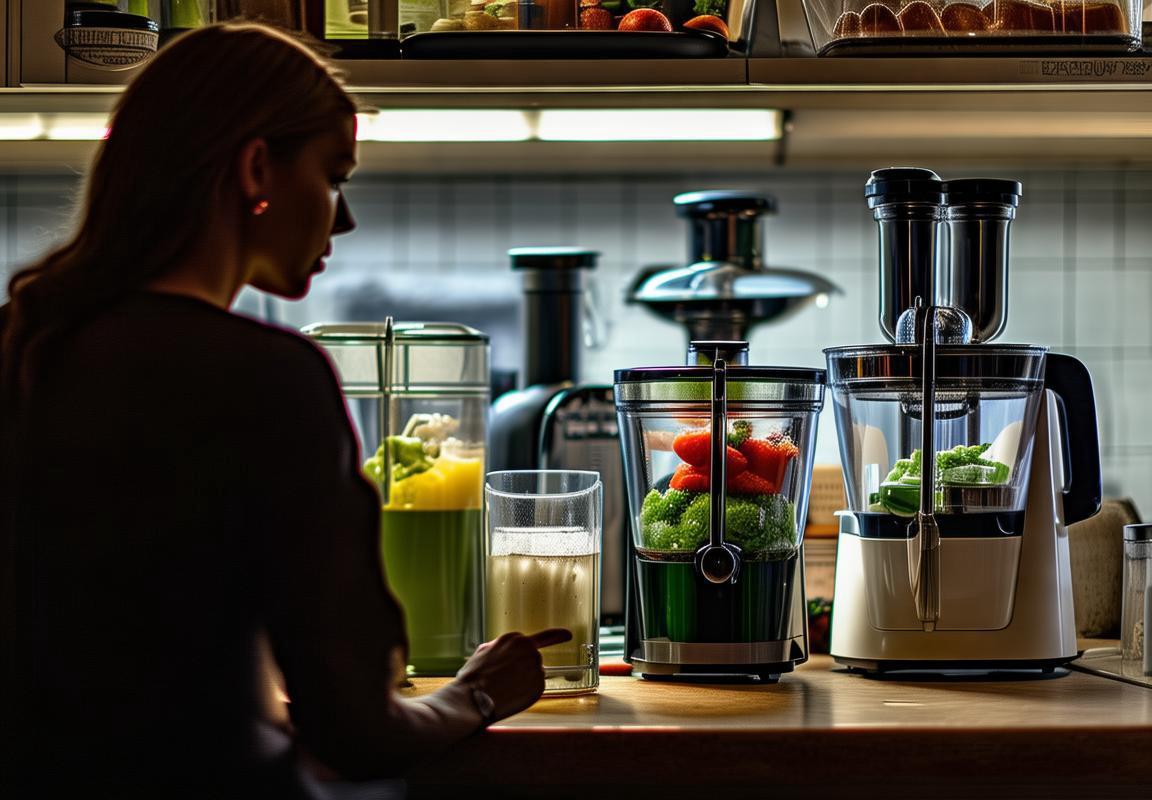
Features to Look for in a BPA-Free Juicer
When selecting a BPA-free juicer, it’s essential to consider several key features that can impact your juicing experience and the quality of the juice you produce. Here’s what to look for:
-
Material Quality: Ensure the juicer is made from high-quality, BPA-free materials. This includes the exterior shell, the juicing components, and any seals or gaskets. Look for brands that are transparent about their material choices and have certifications to back up their claims.
-
Juicing Mechanism: Different juicers use various mechanisms to extract juice from fruits and vegetables. Centrifugal juicers are fast and efficient but can produce frothy juice. Masticating juicers are slower but extract more nutrients and produce less waste. Citrus juicers are ideal for citrus fruits. Consider which type suits your juicing needs and preferences.
-
Ease of Use: A juicer should be user-friendly. Look for features like a simple assembly process, easy-to-clean parts, and a compact design that takes up minimal counter space. Some models come with built-in pulp collectors or juice separators to make cleanup even easier.
-
Capacity and Speed: The capacity of the juicer’s feeding chute can affect how much produce you can juice at once. Larger chutes can handle whole fruits and vegetables, saving time and effort. Speed is also a factor; some juicers operate at high speeds, which can heat up the juice and potentially degrade nutrients, while others offer a slower, gentler extraction process.
-
Noise Level: No one wants a noisy kitchen appliance. Look for juicers that are designed to minimize noise during operation. While all juicers will produce some noise, some models are engineered to be quieter than others.
-
Durability and Warranty: A well-built juicer should last for years. Check for stainless steel components, which are durable and resistant to corrosion. Additionally, a good warranty can give you peace of mind, knowing that the manufacturer stands behind the quality of their product.
-
Additional Features: Some juicers come with extra features that can enhance your juicing experience. These might include adjustable speeds, a wide range of juice nozzle sizes for different types of produce, or even a reverse function to clear clogs without the need for tools.
-
Brand Reputation: Research the reputation of the brand. Look for reviews and feedback from other consumers. A brand with a history of producing reliable, high-quality juicers is more likely to deliver a satisfactory product.
-
Price vs. Value: While it’s tempting to go for the cheapest option, the old adage “you get what you pay for” often applies to juicers. Consider the price in relation to the features, durability, and brand reputation. Sometimes investing a bit more upfront can save money in the long run by avoiding frequent replacements.
-
Design and Aesthetics: While not a necessity, the design of the juicer can add to your kitchen’s aesthetic. Some juicers are sleek and modern, while others are more traditional. Choose one that complements your kitchen style and your personal preferences.
-
Energy Efficiency: Energy consumption is another factor to consider, especially if you’re concerned about your carbon footprint. Some juicers are designed to be more energy-efficient, which can also save you money on your utility bills.
-
Maintenance Requirements: Regular maintenance is crucial for the longevity of any juicer. Look for models that are easy to maintain, with parts that can be easily disassembled and cleaned. Some juicers come with cleaning tools or brushes, which can make the process more convenient.
By carefully considering these features, you can choose a BPA-free juicer that not only meets your functional needs but also aligns with your health goals and lifestyle.
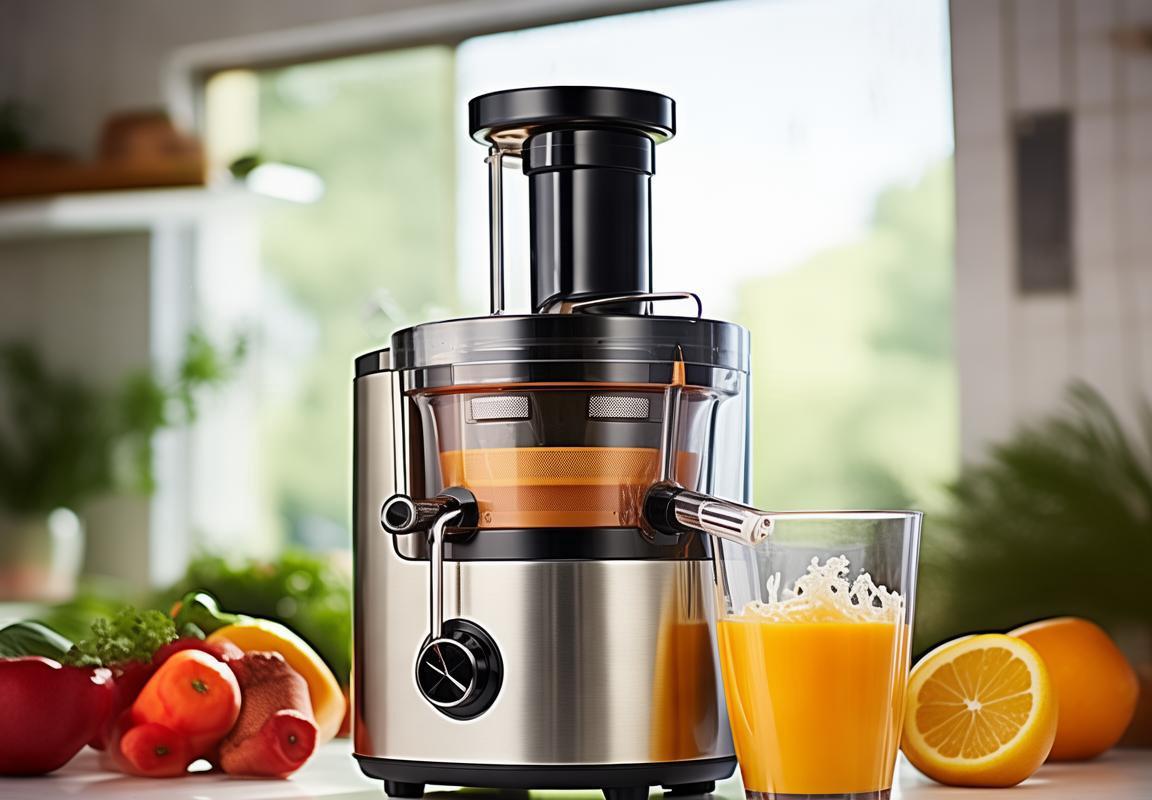
Budget-Friendly Options
When shopping for a BPA-free juicer, cost can be a significant factor, but it doesn’t have to mean compromising on quality or performance. Here’s how to find budget-friendly options that still deliver great results.
Finding the Right Price Point– Assess your budget and decide on the price range that feels comfortable for you. Remember, the most expensive model may not always be the best for your needs.- Look for sales and promotions. Stores often have discounts on particular models, especially during holidays or special events.
Online Marketplaces and Retailers– Online platforms like Amazon, Walmart, and Target can offer competitive pricing, and sometimes you can find deals that are not available in physical stores.- Consider buying second-hand. There are reputable websites and forums where people sell gently used appliances, which can be a more affordable option.
Value Brands– Explore brands that are known for offering good quality at lower prices. Some manufacturers specialize in budget-friendly kitchen appliances that don’t skimp on durability or functionality.
Local Stores and Clearance Sections– Check local department stores, big-box retailers, and electronics stores for their clearance sections. Sometimes, stores will have discontinued models at a reduced price.- Local appliance stores may also have sales, especially when they are trying to clear inventory.
Comparing Prices and Specifications– Use online comparison tools to see how different models stack up against each other in terms of price and features.- Look for models that have similar specifications to those of higher-priced juicers but at a lower cost.
Considerations for Budget-Friendly Juicers– Entry-level models might not have all the advanced features of high-end juicers but can still be effective for everyday use.- Some budget juicers may lack certain features like reverse function or overload protection, but this doesn’t necessarily mean they’re inferior if they meet your needs.
Long-Term Value– Think about the long-term value of the juicer. A cheaper model that breaks down quickly may end up costing more in the long run than a slightly more expensive one that lasts longer.- Look for juicers with warranties, which can give you some peace of mind and protection if something goes wrong.
Seeking Expert Advice– Before making a purchase, read reviews from experts and other consumers to get insights into the performance and durability of different budget juicers.- Join online communities and forums where people discuss their experiences with various appliances to get real-world feedback.
Researching User Experiences– User reviews on social media, product review websites, and consumer reporting sites can provide valuable information about the reliability of budget-friendly juicers.- Pay attention to common issues reported by users and see if the manufacturer provides good customer service.
Purchasing Decisions– When you find a budget juicer that fits your criteria, don’t hesitate to make the purchase. These opportunities can be fleeting, especially for popular models.- Remember that a budget-friendly juicer is a practical choice, but it doesn’t mean you have to sacrifice the quality of your juice or the enjoyment of using the appliance.
By carefully considering your budget, doing thorough research, and being patient in your search, you can find a BPA-free juicer that meets your needs without breaking the bank. Remember, the best budget-friendly juicer is one that serves you well and fits seamlessly into your lifestyle and kitchen space.
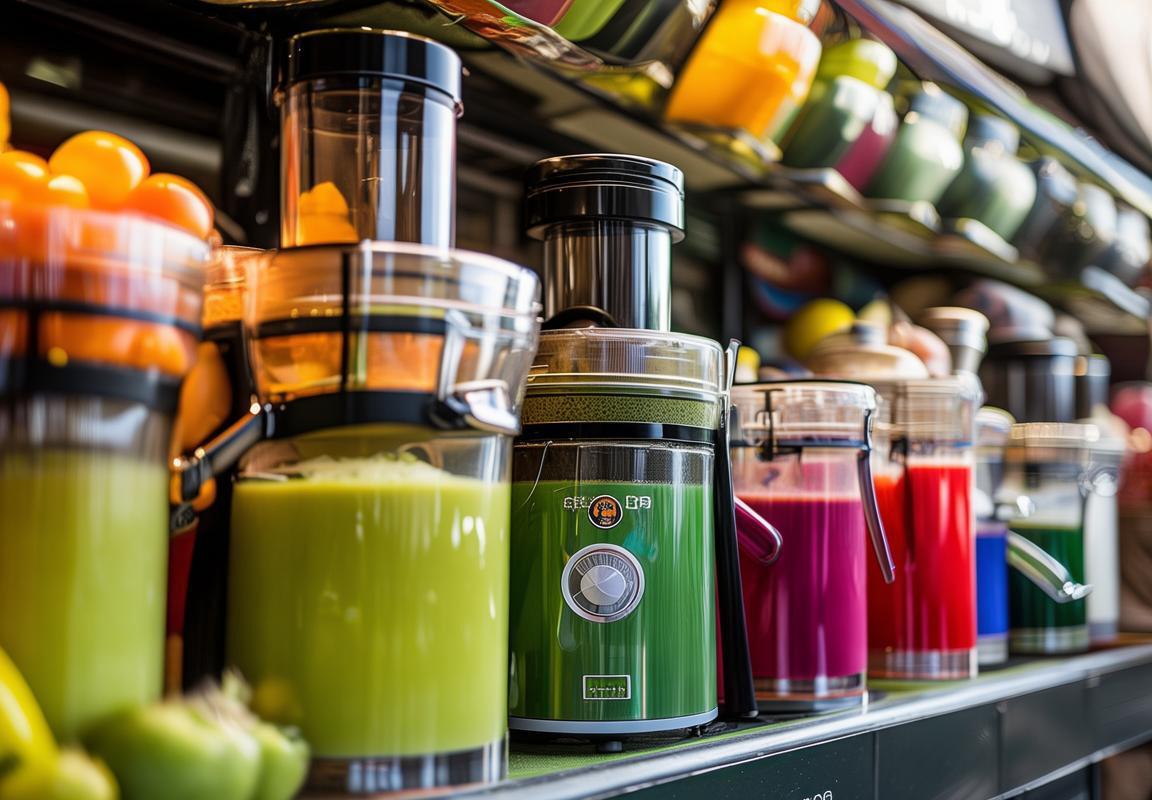
Customer Reviews and Recommendations
When it comes to purchasing a BPA-free juicer, customer reviews and recommendations can be invaluable. Here’s a closer look at why they matter and how they can guide your decision-making process.
Understanding the Real-Life ExperiencesCustomer reviews offer a window into the real-life experiences of other consumers. They provide insights into how the juicer performs under different conditions and over time. By reading about others’ experiences, you can gauge the reliability, durability, and ease of use of the juicer you’re considering.
Identifying Common Issues and SolutionsOne of the key benefits of customer reviews is the ability to identify common issues and solutions. For instance, if multiple users report that a certain model struggles with specific fruits or vegetables, it might be a sign that the juicer isn’t as versatile as advertised. Conversely, if many users praise the juicer’s ability to handle a wide variety of produce, it could be a strong selling point.
The Importance of Long-Term SatisfactionWhile short-term reviews can be helpful, long-term satisfaction is crucial when investing in a juicer. Customers who have used a juicer for several months or years can offer valuable insights into its longevity and whether it holds up well over time. These reviews can help you understand if the juicer’s performance diminishes over time or if it remains a reliable appliance.
Seeking Out Consistent RatingsConsistency in customer ratings is a good indicator of a juicer’s overall quality. If a juicer consistently receives high ratings across multiple platforms, it suggests that a large number of users have had a positive experience with the product. This consistency can be reassuring when making a purchase decision.
The Role of Personal RecommendationsPersonal recommendations from friends, family, or colleagues can be incredibly influential. When someone you trust endorses a particular juicer, it carries a lot of weight. These recommendations are often based on firsthand experience and can provide a personalized perspective that might not be as evident in online reviews.
Comparing Reviews from Different SourcesIt’s important to compare reviews from various sources, including manufacturer websites, third-party review platforms, and social media. This ensures a well-rounded perspective and helps you avoid potential biases that might be present in reviews from a single source.
Looking for a Diverse Range of FeedbackDiverse feedback can help you understand the nuances of a juicer. If you notice that some users love the juicer for its quiet operation while others complain about it, it gives you a more complete picture of what to expect. This diversity can also highlight specific features or aspects that are particularly important to different users.
Avoiding Extreme OpinionsBe wary of reviews that are overly positive or negative, as they might be influenced by factors other than the juicer itself. A review that is excessively glowing might be from a company affiliate, while an overly negative review could be from a competitor or a dissatisfied individual with a personal vendetta.
Understanding the After-Sales ServiceCustomer reviews can also provide information about the manufacturer’s after-sales service. If multiple users mention issues with customer support or warranty claims, it might be a red flag. Conversely, positive feedback on customer service can be a strong point in favor of a particular juicer brand.
Taking into Account the User’s NeedsUltimately, customer reviews and recommendations should align with your own needs and preferences. If a juicer is highly praised for its efficiency but you’re more concerned about ease of cleaning, those reviews might not be as relevant. Tailor your search to focus on reviews that address the features and performance aspects that matter most to you.
Remembering the Context of ReviewsIt’s important to remember that reviews are subjective and influenced by the individual’s circumstances. What one person loves, another might find disappointing. Consider the context of each review and how it might apply to your own juicing habits and lifestyle.